The Future of Employment
description: a widely cited study by Carl Frey and Michael Osborne examining the likelihood of job automation
101 results
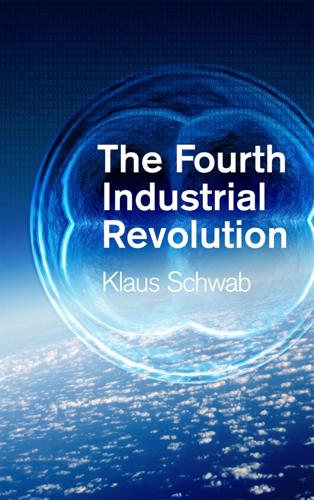
The Fourth Industrial Revolution
by
Klaus Schwab
Published 11 Jan 2016
http://www.project-syndicate.org/commentary/abundance-without-living-standards-growth-by-j--bradford-delong-2015-02 22 John Maynard Keynes, “Economic Possibilities for our Grandchildren” in Essays in Persuasion, Harcourt Brace, 1931. 23 Carl Benedikt Frey and Michael Osborne, “The Future of Employment: How Susceptible Are Jobs to Computerisation?”, Oxford Martin School, Programme on the Impacts of Future Technology, University of Oxford, 17 September 2013. http://www.oxfordmartin.ox.ac.uk/downloads/academic/The_Future_of_Employment.pdf 24 Shelley Podolny, “If an Algorithm Wrote This, How Would You Even Know?”, The New York Times, 7 March 2015 http://www.nytimes.com/2015/03/08/opinion/sunday/if-an-algorithm-wrote-this-how-would-you-even-know.html?
…
, Sisense, 29 July 2015. http://www.sisense.com/blog/much-data-will-3-years/ 90 Moore’s Law generally states that processor speeds, or the overall number of transistors in a central processing unit, will double every two years. 91 Kevin Mayer, Keith Ellis and Ken Taylor, “Cattle Health Monitoring Using Wireless Sensor Networks”, Proceedings of the Communication and Computer Networks Conference, Cambridge, MA, USA, 2004. http://www.academia.edu/781755/Cattle_health_monitoring_using_wireless_sensor_networks 92 Carl Benedikt Frey and Michael A. Osborne, “The Future of Employment: How Susceptible Are Jobs to Computerisation?”, 17 September 2013. http://www.oxfordmartin.ox.ac.uk/downloads/academic/The_Future_of_Employment.pdf 93 Will Knight, “This Robot Could Transform Manufacturing,” MIT Technology Review, 18 September 2012. http://www.technologyreview.com/news/429248/this-robotcould-transform-manufacturing/ 94 See http://www.stratasys.com/. 95 Dan Worth, “Business use of 3D printing is years ahead of consumer uptake”, V3.co.uk, 19 August 2014.
…
Their model predicted that up to 47% of US jobs in 2010 were highly likely to become computerized in the next 10-20 years (Figure V). Figure V: Distribution of US Occupational Employment* over the Probability of Computerization * Distribution based on 2010 job mix. Source: Frey, C.B. and M.A. Osborne, “The Future of Employment: How Susceptible Are Jobs to Computerisation?”, 17 September 2013 Positive impacts – Cost reductions – Efficiency gains – Unlocking innovation, opportunities for small business, start-ups (smaller barriers to entry, “software as a service” for everything) Negative impacts – Job losses – Accountability and liability – Change to legal, financial disclosure, risk – Job automation (refer to the Oxford Martin study) The shift in action Advances in automation were reported on by FORTUNE: “IBM’s Watson, well known for its stellar performance in the TV game show Jeopardy!

The Technology Trap: Capital, Labor, and Power in the Age of Automation
by
Carl Benedikt Frey
Published 17 Jun 2019
Osborne, 2017, “The Future of Employment: How Susceptible Are Jobs to Computerisation?,” Technological Forecasting and Social Change 114 (C): 254–80. 22. B. Mathibela, M. A. Osborne, I. Posner, and P. Newman, 2012, “Can Priors Be Trusted? Learning to Anticipate Roadworks,” in IEEE Conference on Intelligent Transportation Systems, 927–32. 23. B. Mathibela, P. Newman, and I. Posner, 2015, “Reading the Road: Road Marking Classification and Interpretation,” IEEE Transactions on Intelligent Transportation Systems 16 (4): 2080. 24. See C. B. Frey and Osborne, 2017, “The Future of Employment.” 25. Rio Tinto, 2017, “Rio Tinto to Expand Autonomous Fleet as Part of $5 Billion Productivity Drive,” December 18, http://www.riotinto.com/media/media-releases-237_23802.aspx. 26.
…
Malthus, [1798] 2013, An Essay on the Principle of Population, Digireads. com, Kindle, 179. 49. C. B. Frey and Osborne, 2017, “The Future of Employment,” 262. 50. The O*NET database contains hundreds of standardized and occupation-specific descriptors for occupations covering the U.S. economy. For a list of occupations involving “originality,” see O*NET OnLine, 2018, “Find Occupations: Abilities—Originality,” https://www.onetonline.org/find/descriptor/result/1.A.1.b.2. 51. C. B. Frey and Osborne, 2017, “The Future of Employment,” 262. 52. These descriptions stem from large-scale surveys of the American workforce, in which workers are asked how often they engage in various tasks.
…
Her voice was not so much raised as in ordinary talking, and its expressiveness was perfect.”45 The Next Wave More and more jobs lend themselves to automation. But anecdotes alone cannot tell us much about the extent to which jobs will be replaced in the future, or the types of job that will be affected. So in a 2013 paper titled “The Future of Employment: How Susceptible Are Jobs to Computerisation?,” my Oxford University colleague Michael Osborne and I set out to identify the near-term engineering bottlenecks to automation as a way of estimating the exposure of current jobs to recent advances in AI. As noted above, until recently, computers had a comparative advantage in tasks involving routine rule-based activities, while humans did better at everything else.

Automation and the Future of Work
by
Aaron Benanav
Published 3 Nov 2020
Jason, 104n24 Facebook, 40 farming, 41–2 “Fight for Fifteen” movement, 2 financial liberalization, 25–6 folk politics, 95 footwear industry, 42–3 Ford, Martin on COVID-90 pandemic, 103n15 Rise of the Robots, 3, 62 Four Futures (Frase), 4–5 Fourier, Charles, 132–3n7, 133–4n13 France deindustrialization in, 108n22 disaggregation of manufacturing-output growth rates in, 19–20 employment rates in, 53 GDP (gross domestic product) in, 115n26 growth statistics in, 30–1 job security in, 52, 107n19 manufacturing capacity in, 25 OECD index and, 50–1 out-of-work income maintenance/support in, 119–20n6 service sector employment in, 58 waves of strikes in, 96 workforce statistics in, 41 Frase, Peter Four Futures, 4–5 freedom, necessity and, 81–93 free giving, 88–9 free money, 72–6 Frey, Carl Benedikt on COVID-90 pandemic, 103n15 “The Future of Employment: How Susceptible Are Jobs to Computerization?,” 103n17 The Technology Trap: Capital, Labor, and Power in the Age of Automation, 102n7 Friedman, Milton, 73–4 “The Future of Employment: How Susceptible Are Jobs to Computerization?” (Frey and Osborne), 103n17 G7 economies, 9–10 G20 countries, reduction of public debt-to-GDP ratio in, 66–7 Gates Bill, 3 GDP (gross domestic product), 18–9, 112n1, 112n2, 115n26 Gelles, David, 103n15 Germany employment rates in, 53 GDP (gross domestic product) in, 112n2, 115n26 growth-rate statistics in, 18 Hartz IV reforms (2004), 52 imports to US from, 27 labor productivity growth in, 32–3 manufacturing capacity in, 25 manufacturing employment shares in, 28 Minijobs, 52 MVA in, 112n2 OECD index and, 50–1 robotization in, 28, 107n16 unemployment rates in, 46–7 US technology share with, 24 Gershuny, Jonathan, 57–9 global deindustrialization about, 15–6 manufacturing overcapacity, 22–8 productivity paradox, 16–22 waves of, 22, 26–7 global South, employment rates in, 53–4 Gordon, Robert J., 9 Gorz, André, 8 Greece, waves of strikes in, 96 Green Revolution, 41–2, 73 Greenspan, Alan, xi gross domestic product (GDP), 18–9, 112n1, 112n2, 115n26 Hägglund, Martin, 135n24 Hammond, James Henry, 83, 132n6 Hansen, Alvin, 69 Hartz IV reforms (2004), 52 Hayek, Friedrich, 73 Hong Kong, waves of strikes in, 96 “Humanity First” platform, 4 ICT (information and communications technology), 36–7 ILO (International Labour Organization), 55, 105n1 imports, to United States, 111n42 income gains in, 125n49 labor share of, 9–10, 61–2 income inequality, 62–3, 127n16 India deindustrialization in, 23 employment rates in, 53 labor productivity growth in, 34 Indonesia deindustrialization in, 108n22 waves of strikes in, 96 inequality income, 62–3, 127n16 increases in, 61–2 informal sector employment, 54 information and communications technology (ICT), 36–7 In Our Hands (Murray), 74–5 International Labour Organization (ILO), 55, 105n1 In Time (film), 123n32 Inventing the Future (Srnicek and Williams), xii, 4–5, 76 investment, private, 131n45 Iran, service sector employment in, 56 Iraq, waves of strikes in, 96 Italy Biagi law (2013), 52 employment rates in, 53 manufacturing capacity in, 25 OECD index and, 50–1 out-of-work income maintenance/support in, 119–20n6 public debt-to-GDP ratio in, 67 service sector employment in, 58 workforce statistics in, 41 IT sector, 118n48 Japan deindustrialization in, 21 employment rates in, 53 growth-rate statistics in, 18 imports to US from, 27 income growth in, 34–5 labor productivity growth in, 32–3 manufacturing capacity in, 25 manufacturing employment shares in, 28 OECD index and, 50–1 public debt-to-GDP ratio in, 67 robotization in, 28, 107n16 unemployment rates in, 46–7 US technology share with, 24–5 women’s labor force in, 52 workforce statistics in, 41 Japanification, x, 36 job creation, service sector and, 60–1 job security, 52–3 Joon-Ho, Bong, 62 Kalecki, Michal, 128n19 Keynes, John Maynard, 76, 103n20 Keynesian economics, 66–71, 127n15 Khrushchev, Nikita, 132n4 Kropotkin, Peter, 83, 85, 89 Kurzweil, Ray, 101n4 labor-augmenting technologies, 5–6 labor demand about, 45–6 global, 53–5 postindustrial levels, 56–64 skilled vs. unskilled, 87–8 unemployment rates, 46–53 labor market arbitrage of, 56 overcapacity and, 38–9 labor-productivity growth, x, 17 labor share, global measures of, 104n26 labor underdemand, 8–13, 43, 45–6, 78, 104n23 Lange, Oskar, 71, 128n21 Latin America deindustrialization in, 21 expansion of nonstandard employment in, 54 League of Nations, 127n16 Lebanon, waves of strikes in, 96 Leontief, Wassily, 7, 45 long downturn, x Looking Backward (Bellamy), 86–7 Lyft, 50 machine age, 2–5 manufacturing sector decline in employment growth in, 111n39 disaggregation of in France, 19–20 employment in, 16 falling price of, 124n41 global trade and, 114n22 growth rates in, 18, 20–1 size of, 106n9 Manufacturing Value Added (MVA), 112n1, 112n2, 114–5n23 Marcuse, Herbert, 8, 132–3n7 Marx, Karl Capital, 8, 47–8 Communist Manifesto, 85 concept of relative surplus population, 120n8 political development of, 133–4n13 on post-scarcity, 83, 84–5 stagnant economic sector concept, 57 Mason, Paul, 96–7 McAfee, Andrew of labor-productivity growth, 17 The Second Machine Age, 2–3, 45 Meidner Plan, 79 Meredith, Sam, 128–9n24 Mexico deindustrialization in, 23 service sector employment in, 56, 58 Minijobs, 52 mining industry, 117n45 MNCs (multinational corporations), 27 money, free, 72–6 Moore’s law, 40 More, Thomas on post-scarcity, 83, 89 Utopia, 82, 84 Morris, William, 132–3n7 mudsill theory, 132n6 multinational corporations (MNCs), 27 Murray, Charles In Our Hands, 74–5 Musk, Elon, 3 necessity, freedom and, 81–93 neoliberalism, 129n30 Neurath, Otto, 85 New Deal-style capital labor, 70–1 Nigeria, service sector employment in, 56 nitrogen capitalism, 42 nonming gong, 54 nonstandard employment, expansion of, 54–5 Obama, Barack, 3–4 Occupy Oakland, 115n30 OECD (Organisation for Economic Co-operation and Development).
…
For a counterpoint, see Matt Simon, “If Robots Steal So Many Jobs, Why Aren’t They Saving Us Now?,” Wired Magazine, March 23, 2020. 16 Kurt Vonnegut, Player Piano, Dial Press, 2006 [1952], p. 73. 17 Carl Frey and Michael Osborne originally released their study as an Oxford Martin working paper online in 2013; it was later published as “The Future of Employment: How Susceptible Are Jobs to Computerization?,” Technological Forecasting and Social Change, vol. 114, January 2017; Ljubica Nedelkoska and Glenda Quintini, “Automation, Skills Use, and Training,” OECD Social, Employment, and Migration Working Papers, no. 202, 2018. 18 Quoted in Jerry Kaplan, “Don’t Fear the Robots,” Wall Street Journal, July 21, 2017.
…
See Organisation for Economic Co-operation and Development (OECD) OECD index, 50–1, 53 offshoring, 17 omnia sunt communia principle, 84 On the Economy of Machinery and Manufactures (Babbage), 7–8 Organisation for Economic Co-operation and Development (OECD) about, 6, advocacy for deregulation of labor markets, 61–2 economic growth rates and, 68 union density and, 63–4 Osborne, Michael “The Future of Employment: How Susceptible Are Jobs to Computerization?,” 103n17 output about, 18–9 growth rates in, 20 rate of growth of, 19 overcapacity, 37–9 Oxford Martin School, 6 Paine, Thomas, 73 The Paradise within the Reach of All Men, without Labour (Etzler), 7–8 Parasite (film), 62 Paris Commune, 85, 115n30 Philippines, service sector employment in, 56 The Philosophy of Manufactures (Ure), 7–8 Piketty, Thomas, 63 piquetero movement, 98 Plato Republic, 84 Player Piano (Vonnegut), 6 Polanyi, Karl, 85 post-scarcity, 13, 69, 72–3, 76, 82, 86–93 post-scarcity tradition about, 83–6, 132–3n7, 136n31 freedom and, 90–3 work sharing, 86–90 post-work.
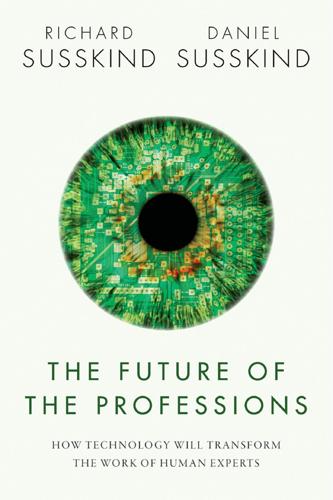
The Future of the Professions: How Technology Will Transform the Work of Human Experts
by
Richard Susskind
and
Daniel Susskind
Published 24 Aug 2015
See <http://www.ibras.dk/montypython/episode10.htm> (accessed 8 March 2015). 253 ‘2012 Annual Report to Congress—Volume 1’, Taxpayer Advocate Service at the IRS, 9 January 2013 <http://www.taxpayeradvocate.irs.gov/2012-Annual-Report/FY-2012-Annual-Report-To-Congress-Full-Report.html> (accessed 8 March 2015). 254 <https://turbotax.intuit.com/>, <http://www.hrblock.com>, <http://www.taxact.com>. 255 These were 47,946,000 self-prepared e-filing receipts, 125,821,000 total e-filing receipts, and 149,684,000 total individual income tax returns (online and paper). ‘2014 Filing Season Statistics’, IRS, 26 December 2014 <http://www.irs.gov/uac/Dec-26-2014> (accessed 27 March 2015). 256 <https://ttlc.intuit.com/>, <http://community.hrblock.com/>. 257 <http://quickbooks.intuit.com>, <https://www.xero.com/>, <http://www.kashflow.com>. 258 See HM Revenue & Customs, ‘Making Tax Easier’, March 2015, <https://www.gov.uk/government/uploads/system/uploads/attachment_data/file/413975/making-tax-easier.pdf> (accessed 14 March 2015). 259 ‘Record to report cycle—tax compliance and reporting’, Deloitte, 2014, <https://www2.deloitte.com/content/dam/Deloitte/global/Documents/Tax/dttl-tax-tmc-technology-landscape-2014.pdf> (accessed 8 March 2015). 260 ‘European VAT refund guide 2014’, Deloitte Global Tax Center (Europe), 2014 <http://www2.deloitte.com/content/dam/Deloitte/global/Documents/Tax/dttl-tax-vat-refund-guide-gtce-2014.pdf> (accessed 8 March 2015). 261 ‘Electronic Arm Twisting’, Economist, 17 May 2014. 262 Elisabetta Povoledo, ‘Italians Have a New Tool to Unearth Tax Cheats’, New York Times, 27 Jan. 2013 <http://www.nytimes.com> (accessed 8 March 2015). 263 Reed Albergotte, ‘IRS, States Call on IBM, LexisNexis, SAS to Fight Fraud’, Wall Street Journal, 22 July 2013 <http://www.wsj.com> (accessed 8 March 2015). 264 Abbi Hobbs, ‘Big Data, Crime and Security’, Houses of Parliament Postnote no. 470, July 2014 <http://www.parliament.uk> (accessed 8 March 2015). 265 Lucy Warwick-Ching and Vanessa Houlder, ‘Ten Ways HMRC Checks if You’re Cheating’, Financial Times, 16 Nov. 2012 <http://www.ft.com> (accessed 8 March 2015). 266 Carl Benedikt Frey and Michael Osborne, ‘The Future of Employment: How Susceptible Are Jobs to Computerisation’, 17 Sept. 2013 <http://www.oxfordmartin.ox.ac.uk/downloads/academic/The_Future_of_Employment.pdf> (accessed 23 March 2015). 267 ‘2012 Annual Report to Congress—Volume 1’, Taxpayer Advocate Service at the IRS, 9 January 2013 <http://www.taxpayeradvocate.irs.gov/2012-Annual-Report/FY-2012-Annual-Report-To-Congress-Full-Report.html> (accessed 8 March 2015). 268 See Richard Susskind, Expert Systems in Law (1987), 208–13. 269 ‘Key Facts and Trends in the Accountancy Profession’, Financial Reporting Council, June 2014 <https://www.frc.org.uk/Our-Work/Publications/FRC-Board/Key-Facts-and-Trends-in-the-Accountancy-Profession.pdf> (accessed 8 March 2015). 270 ‘Our Audit Methodology’, KPMG, <https://www.kpmg.com/eg/en/services/audit/pages/ourauditmethodology.aspx> (accessed 8 March 2015), ‘Transparency Report 2014’, EY Global, <http://www.ey.com/Publication/vwLUAssets/EY-Global-Transparency-Report-2014/%20$FILE/EY-Global-Transparency-Report-2014.pdf> (accessed 8 March 2015). 271 ‘Transparency Report: Building trust through assurance’, PwC UK, 30 June 2014 <http://www.pwc.co.uk/en_UK/uk/transparencyreport/assets/pdf/transparency-report-fy14.pdf> (accessed 8 March 2015). 272 John C.
…
An updated version of their thinking is found in ‘Dancing with Robots’ (2013), at <http://content.thirdway.org/publications/714/Dancing-With-Robots.pdf> (accessed 25 March 2015). 36 What we say here is consistent with the observation by Frey and Osborne, in a much-discussed paper, that ‘Computer capital can now equally substitute for a wide range of tasks commonly defined as non-routine.’ See Carl Benedikt Frey and Michael Osborne, ‘The Future of Employment: How Susceptible Are Jobs to Computerisation’, 17 Sept. 2013 <http://www.oxfordmartin.ox.ac.uk/downloads/academic/The_Future_of_Employment.pdf> (accessed 23 March 2015). 37 Garrett Hardin, ‘The Tragedy of the Commons’, Science, 162: 3859 (1968), 1243–8. 38 Jeremy Rifkin, The Zero Marginal Cost Society (2014). 39 Yochai Benkler, The Wealth of Networks (2006), 153. 40 Benkler, The Wealth of Networks, 221–2. 41 Carol Rose, ‘The Comedy of the Commons: Commerce, Custom, and Inherently Public Property’, University of Chicago Law Review, 53: 3 (1986), 711–81.
…
Frame, Alex, Salmond: Southern Jurist (Wellington: Victoria University Press, 1995). Freidson, Eliot, Professional Powers, paperback edn. (Chicago: University of Chicago Press, 1988). Freidson, Eliot, Professionalism, 3rd edn. (Oxford: Polity Press, 2001). Frey, Carl Benedikt, and Michael Osborne, ‘The Future of Employment: How Susceptible Are Jobs to Computerisation’, 17 Sept. 2013 <http://www.oxfordmartin.ox.ac.uk/downloads/academic/The_Future_of_Employment.pdf> (accessed 23 March 2015). Friedman, Thomas, The World is Flat, updated and expanded edn. (London: Penguin, 2006). Frizell, Sam, ‘Meet the Robots Shipping Your Amazon Orders’, Time, 1 Dec. 2014 <http://time.com/3605924/amazon-robots/> (accessed 23 March 2015).

Thinking Machines: The Inside Story of Artificial Intelligence and Our Race to Build the Future
by
Luke Dormehl
Published 10 Aug 2016
, Dialectica, Vol. 4, no. 3, 1950. 8 ‘Google’s Self-Driving Car in Five-Car Crash’, Mountain View Voice, 8 August 2011. 9 Black, Thomas, ‘Google Sees Automated Flight Going “All the Way” to airlines’, Bloomberg, 5 May 2015: bloomberg.com/news/articles/2015–05-05/google-sees-automated-flight-going-all-the-way-to-airliners 10 Frey, Carl and Osborne, Michael, ‘The Future of Employment: How Susceptible Are Jobs to Computerisation?’, Oxford Martin School, 17 September 2013: fhi.ox.ac.uk/wp-content/uploads/The-Future-of-Employment-How-Susceptible-Are-Jobs-to-Computerization.pdf 11 Wile, Rob, ‘A Venture Capital Firm Just Named an Algorithm to Its Board Of Directors – Here’s What It Actually Does’, Business Insider, 13 May 2015: businessinsider.com/vital-named-to-board-2014–5?
…
En route, we will meet computers pretending to trap paedophiles, dancing robot vacuum cleaners, chess-playing algorithms, and uploaded consciousnesses designed to speak to you from beyond the grave. This is the story of how we imagine our future, and how in a world obsessed with technology, we carve out a role for humanity in the face of accelerating computer intelligence. It’s about the nature of creativity, the future of employment, and what happens when all knowledge is data and can be stored electronically. It’s about what we’re trying to do when we make machines smarter than we are, how humans still have the edge (for now), and the question of whether you and I aren’t thinking machines of a sort as well. The pioneering British mathematician and computer scientist Alan Turing predicted in 1950 that by the end of the twentieth century, ‘the use of words and general educated opinion will have altered so much that one will be able to speak of machines thinking without expecting to be contradicted’.
…
‘Can a robot turn a canvas into a beautiful masterpiece?’ The robot with whom he is conversing deflects the question by asking, ‘Can you?’ At first glance, asking if a machine can be creative isn’t a matter of particular importance. Compared to some of the other issues addressed in this book – the future of employment or artificially intelligent medicine – it’s easy to think of it as downright minor. It’s the kind of question that two software engineers at Google might casually chat about over beers on a Friday afternoon. In fact, artificial creativity is one of the most important issues faced in AI.
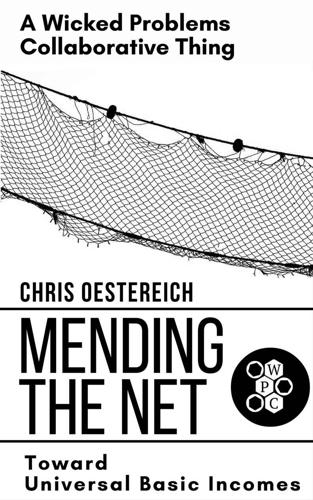
Mending the Net: Toward Universal Basic Incomes
by
Chris Oestereich
Published 20 Oct 2016
[8] Pizzigati, S, 2012, “America’s Rich: Pulling Away,” http://inequality.org/americas-rich-pulling/. [9] Bremmer, I, 2016, “These 5 Facts Explain the Unstable Global Middle Class,” http://time.com/4198164/these-5-facts-explain-the-unstable-global-middle-class/. [10] Benedikt Frey, C, and Osborne, M, 2013, “The future of employment: how susceptible are jobs to computerisation?,” http://www.oxfordmartin.ox.ac.uk/downloads/academic/The_Future_of_Employment.pdf. [11] Dickerson, M, 2016, “Is the American Dream dead?” https://theconversation.com/is-the-american-dream-dead-57095. [12] Davis, A, and Mishel, L, 2014, “CEO Pay Continues to Rise as Typical Workers Are Paid Less,” http://www.epi.org/publication/ceo-pay-continues-to-rise/

Rise of the Robots: Technology and the Threat of a Jobless Future
by
Martin Ford
Published 4 May 2015
On Canadian median wages and unionization, see Miles Corak, “The Simple Economics of the Declining Middle Class—and the Not So Simple Politics,” Economics for Public Policy Blog, August 7, 2013, http://milescorak.com/2013/08/07/the-simple-economics-of-the-declining-middle-class-and-the-not-so-simple-politics/, and “Unions on Decline in Private Sector,” CBC News Canada, September 2, 2012, http://www.cbc.ca/news/canada/unions-on-decline-in-private-sector-1.1150562. 59. Carl Benedikt Frey and Michael A. Osborne, “The Future of Employment: How Susceptible Are Jobs to Computerisation?,” Oxford Martin School, Programme on the Impacts of Future Technology, September 17, 2013, p. 38, http://www.futuretech.ox.ac.uk/sites/futuretech.ox.ac.uk/files/The_Future_of_Employment_OMS_Working_Paper_1.pdf. 60. Paul Krugman, “Robots and Robber Barons,” New York Times, December 9, 2012, http://www.nytimes.com/2012/12/10/opinion/krugman-robots-and-robber-barons.html?
…
Blinder, “Free Trade’s Great, but Offshoring Rattles Me,” Washington Post, May 6, 2007, http://www.washingtonpost.com/wp-dyn/content/article/2007/05/04/AR2007050402555.html. 49. Blinder, “Offshoring: The Next Industrial Revolution?” 50. Carl Benedikt Frey and Michael A. Osborne, “The Future of Employment: How Susceptible Are Jobs to Computerisation?,” Oxford Martin School, Programme on the Impacts of Future Technology, September 17, 2013, p. 38, http://www.futuretech.ox.ac.uk/sites/futuretech.ox.ac.uk/files/The_Future_of_Employment_OMS_Working_Paper_1.pdf. 51. Alan S. Blinder, “On the Measurability of Offshorability,” VOX, October 9, 2009, http://www.voxeu.org/article/twenty-five-percent-us-jobs-are-offshorable. 52.
…
Ibid., based on Table 15, p. 39; see the row labeled “Joint & Survivor, Male 65 and Female 60, 100% Survivor Income-Life Annuity.” An alternate plan with a 3 percent annual increase starts at just $3,700 (or about $300 per month). 31. Carl Benedikt Frey and Michael A. Osborne, “The Future of Employment: How Susceptible Are Jobs to Computerisation?,” Oxford Martin School, Programme on the Impacts of Future Technology, September 17, 2013, p. 38, http://www.futuretech.ox.ac.uk/sites/futuretech.ox.ac.uk/files/The_Future_of_Employment_OMS_Working_Paper_1.pdf. 32. For China population figures, see Deirdre Wang Morris, “China’s Aging Population Threatens Its Manufacturing Might,” CNBC, October 24, 2012, http://www.cnbc.com/id/49498720 and “World Population Ageing 2013,” United Nations, Department of Economic and Social Affairs, Population Division, p. 32, http://www.un.org/en/development/desa/population/publications/pdf/ageing/WorldPopulationAgeing2013.pdf. 33.

Free Money for All: A Basic Income Guarantee Solution for the Twenty-First Century
by
Mark Walker
Published 29 Nov 2015
The most detailed and methodologically sound investigation of the issue I know of can be found in Frey and Osborne (2013). They identify 702 distinct occupations in the US work force and have found that “about 47 percent of total US employment is at risk” Carl Benedikt Frey and Michael A. Osborne, “The Future of Employment: How Susceptible Are Jobs to Computerisation?” Retrieved September 7 (2013). http:// assets.careerspot.com.au/files/news/The_Future_of_Employment_ OMS_Working_Paper_1.pdf. Keith Wagstaff, “How Foxconn’s Million-Machine ‘Robot Kingdom’ Will Change the Face of Manufacturing,” Time, 2011, http://techland.time.com/2011/11/09/how-foxconns-million-machine-robotkingdom-will-change-the-face-of-manufacturing/.
…
Frankfurt, Harry G. Freedom of the Will and the Concept of a Person. Clifton, NJ: Springer, 1988. Frey, Bruno S. Happiness: A Revolution in Economics. Cambridge, MA: MIT Press, 2008. Frey, Carl Benedikt, and Michael A. Osborne. “The Future of Employment: How Susceptible Are Jobs to Computerisation?” Retrieved September, 2013. http://assets.careerspot.com.au/files/news/The_Future_of_ Employment_OMS_Working_Paper_1.pdf. Friedman, Milton. Capitalism and Freedom. Chicago: University of Chicago Press, 1962. Friedman, Milton, and Rose Friedman. Free to Choose: A Personal Statement. Harcourt: Houghton Mifflin, 1990.
…
Gregory Clark, A Farewell to Alms: A Brief Economic History of the World (Princeton, NJ: Princeton University Press, 2008). This passage is quoted in Brynjolfsson and McAfee, Race against the Machine. 28. There are still a few specialized uses for horses, such as use by police in parks and crowd control situations. 29. Frey and Osborne, “The Future of Employment.” 30. Karl Widerquist and Michael A. Lewis, “An Efficiency Argument for the Basic Income Guarantee,” International Journal of Environment, Workplace and Employment 2, 1 (2006): 21–43. 6 BIG Happiness 1. I am assuming a version of “welfarism.” I believe the argument can incorporate non-welfarist conceptions of “the good,” but ignore that here as an unnecessary complication.

Ghost Road: Beyond the Driverless Car
by
Anthony M. Townsend
Published 15 Jun 2020
Murnane, “The Skill Content of Recent Technological Change: An Empirical Exploration,” Quarterly Journal of Economics (2003): 1279–333. 150“they can be exhaustively specified”: Autor et al., “The Skill Content,” 1283. 152predictions have also proved remarkably prescient: The Quarterly Journal of Economics article has been cited more than 4,300 times in the last 15 years, according to Google Scholar. 152“limited opportunities for substitution or complementarity”: Chris O’Brien, “Venture Capitalists Flock to Truck Technology Startups,” Trucks.com, July 31, 2017, https://www.trucks.com/2017/07/31/venture-capitalists-flock-truck-technology-startups/. 152an “informal” attempt to chart the territory: Autor et al., “The Skill Content,” 1282. 153jobs in the US economy were at risk of automation: Carl Benedikt Frey and Michael A. Osborne, “The Future of Employment: How Susceptible Are Jobs to Computerisation?” Technological Forecasting and Social Change 114 (January 2017): 254–80, https://www.oxfordmartin.ox.ac.uk/downloads/academic/The_Future_of_Employment.pdf. 154SAFE has been a strong advocate of AVs: James Osborne, “Among Retired Military Leaders, U.S. Thirst for Oil Poses Security Risk,” Houston Chronicle, July 8, 2017, https://www.houstonchronicle.com/business/article/Among-retired-military-leaders-U-S-thirst-for-11272912.php. 154economists see professional drivers in the crosshairs of automation’s advance: Securing America’s Future Energy, America’s Workforce and the Self-Driving Future: Realizing Productivity Gains and Spurring Economic Growth, June 2018, 8, https://avworkforce.secureenergy.org/wp-content/uploads/2018/06/SAFE_AV_Policy_Brief.pdf. 155benefits vastly outweighs projected wage losses: Securing America’s Future Energy, America’s Workforce, 12. 155factor of three or more: Securing America’s Future Energy, America’s Workforce, 9. 155plenty of time for policymakers to prepare: Securing America’s Future Energy, America’s Workforce, 8. 155three possible approaches for the US: Securing America’s Future Energy, America’s Workforce, 44. 156as the trucking workforce ages: David H.
…
Ann Arbor, MLive, October 6, 2017, https://www.mlive.com/news/ann-arbor/index.ssf/2017/10/can_ self-driving_pizza_deliver.html. 231“classified [Elaine Herzberg] as something other”: Ryan Felton, “Video Shows Driver in Autonomous Uber Was Looking Down Moments before Fatal Crash,” Jalopnik, March 21, 2018, https://jalopnik.com/video-shows-driver-in-fatal-autonomous-uber-crash-was-l-1823970417. 231computer-vision algorithms: Katyanna Quach, “Racist Self-Driving Scare Debunked, inside AI Black Boxes, Google Helps Folks Go with TensorFlow,” The Register, March 10, 2019, https://www.theregister.co.uk/2019/03/10/ai_ roundup_080319/. 231marking of pavement to help orient drivers: Bill Loomis, “1900–1930: The Years of Driving Dangerously,” Detroit News, April 26, 2015, https://www.detroitnews.com/story/news/local/michigan-history/2015/04/26/auto-traffic-history-detroit/26312107/. 232dinged for excessive idling: Andrew Small, “CityLab Daily: The Race to Code the Curb,” CityLab, April 2, 2019, https://www.citylab.com/authors/andrew-small/. 233“cities need to invest in the mapping in ways”: Kevin Webb (@kvnwebb), “We’re building smart ways to encode information like curb regulation,” Twitter, November 30, 2018, 1:41 a.m., https://twitter.com/kvnweb/status/1068485225607585798. 234“an exponential runaway beyond”: Vernor Vinge, “The Coming Technological Singularity: How to Survive in the Post-Human Era,” VISION-21 Symposium, NASA Lewis Research Center and Ohio Aerospace Institute, March 30–31, 1993, https://edoras.sdsu.edu/~vinge/misc/singularity.html. 234John von Neumann had raised: John Brockman, Possible Minds (New York: Penguin Press, 2019), 8. 234“AI enthusiasts have been making claims”: Vinge, “The Coming Technological Singularity.” 234“I have set the date 2045”: Christianna Reddy, “Kurzweil Claims That the Singularity Will Happen by 2045,” Futurism, October 5, 2017, https://futurism.com/kurzweil-claims-that-the-singularity-will-happen-by-2045/. 235“machine learning” to disguise the true nature: Chris Smith et al., “The History of Artificial Intelligence,” University of Washington, December 2006, https://courses.cs.washington.edu/courses/csep590/06au/projects/his tory-ai.pdf. 235“a deep level of understanding”: Rodney Brooks, “Post: [For&AI] The Origins of Artificial Intelligence,” Robots, AI, and Other Stuff (blog), April 27, 2018, https://rodneybrooks.com/forai-the-origins-of-artificial-intelligence/. 235“Contemporary neural networks do well on challenges”: Gary Marcus, “Deep Learning: A Critical Appraisal,” New York University, accessed January 22, 2019, https://arxiv.org/pdf/1801.00631.pdf. 236“If . . . driverless cars should also disappoint”: Marcus, “Deep Learning.” 236Frey tallied his predictions of the jobs: Carl Benedikt Frey and Michael A. Osborne, “The Future of Employment: How Susceptible Are Jobs to Computerisation?” University of Oxford, September 17, 2013, 60, https://www.oxfordmartin.ox.ac.uk/downloads/academic/The_Future_of_Employment.pdf. 237“decisive strategic advantage”: Nick Bostrom, Superintelligence:Paths, Dangers, Strategies (Oxford, UK: Oxford University Press, 2014), 96. 237a serious and sober discussion about what: Bostrom, Superintelligence, 96. 238more than $25 million since 2015: Author’s estimate based on figures published by Future of Humanity Institute, “Timeline of the Future of Humanity Institute,” June 25, 2018, https://timelines.issarice.com/wiki/Timeline_of_ Future_of_Humanity_Institute. 238aspiring singleton’s inevitable ambitions: Bostrom, Superintelligence, 118.

Stakeholder Capitalism: A Global Economy That Works for Progress, People and Planet
by
Klaus Schwab
Published 7 Jan 2021
Blame Them, Not Immigrants,” Arlie Hochschild, The Guardian, February 2018, https://www.theguardian.com/commentisfree/2018/feb/14/resentment-robots-job-stealers-arlie-hochschild. 4 The Fourth Industrial Revolution, Klaus Schwab, Penguin Random House, January 2017, https://www.penguinrandomhouse.com/books/551710/the-fourth-industrial-revolution-by-klaus-schwab/. 5 “The Future of Employment: How Susceptible Are Jobs to Computerization?” Carl Frey and Michael Osborne, Oxford University, September 2013, https://www.oxfordmartin.ox.ac.uk/downloads/academic/The_Future_of_Employment.pdf. 6 The Technology Trap: Capital, Labor, and Power in the Age of Automation, Carl Frey, Princeton University Press, June 2019, https://press.princeton.edu/books/hardcover/9780691172798/the-technology-trap. 7 “If Robots and AI Steal Our Jobs, a Universal Basic Income Could Help”, Peter H.
…
The new technologies we were witnessing, including also 3D printing, quantum computing, precision medicine, and others, I came to believe, were on par with that of the First Industrial Revolution—the steam engine—those of the Second Industrial Revolution—the combustion engine and electricity—and that of the Third Industrial Revolution—information technology and computing. They were leading to a disruption of the workforce, changing the nature of not just what we do but who we are, something I previously described in my book The Fourth Industrial Revolution.4 In their landmark 2013 study “The Future of Employment,” Carl Frey and Michael Osborne of Oxford first warned of the kind of disruption this could bring about.5 They notoriously estimated up to half of jobs would be altered in the coming years because of these new technologies, with many of them disappearing altogether. In 2019, Frey followed up on his original study with the equally eye-opening book The Technology Trap,6 showing how today's labor-replacing technologies fit into the longer history of industrial revolutions.
…
See Asian Tigers Fourth Industrial Revolution, 18, 45, 68, 71, 116, 122, 125, 142–145, 161–162, 177, 186, 201, 208, 212, 213, 237, 239 The Fourth Industrial Revolution (Schwab), 116 Foxconn (Taiwan), 59 France Compagnie de Suez join stock company of, 103 First Industrial Revolution spreading to, 131 La France Insoumise populist party of, 81 vote for right-wing populist parties (2000, 2017–2019), 84fig Yellow Vests (Gilets Jaunes) protests of, 86–87, 195 Youth for Climate movement (2017), 86 La France Insoumise (France), 81 The Freelance Isn't Free Law (New York), 243 Freelancers Union (New York), 242–243 Freelancing work, 237–238, 240–243 Freund, Caroline, 138 Frey, Carl, 116, 135 Frick Coke Company, 132 Frick, Henry, 132 Fridays for Climate strikes (2018), 149, 250 Friedman, Milton, 14, 136, 175, 205, 209 Friedrichshafen (Germany), 4–5, 6–7, 8–9, 251 Fukuyama, Francis, 15, 112 “The Future of Employment” study (2013), 116 G G7 countries, social compact breaking down in, 110–111 Gama, Vasco da, 97 Garikipati, Supriya, 224 Gates, Bill, 132 Gazivoda, Tin, 195 GDP (gross domestic product) China's increased total debt–to–GDP ratio, 62 COVID crisis impact on public debt and, 19 description and function of, 9, 24 emerging markets (2002–2019), 64–65fig formula for calculating, 24 New Zealand's COVID-19 response and impact on, 222–223 New Zealand's focus on social issues instead of, 234–236 post-World War II low level of, 105 private sector percentage of China's, 172 Simon Kuznets' warning on progress measured by, 21–25, 34, 46, 53 Singapore (1965–2019), 123–125 stakeholder model going beyond profits and, 189–193 trade globalization measured by percentage of, 16 See also GNI (gross national income); GNP (gross national product) GDP growth declining rates since the 1960s, 25–28 differentiating between global, national, and regional, 27–28 singular focus of policymaking on, 25 as “war-time metric,” 25 Gender pay equity, 243 Gender representation advocacy of, 243–244 Ireland's experiment in, 194 as stakeholder model issue, 188–189 General Data Protection Regulation (European Union), 212 General-purpose technologies (GPTs), 143 Generation Z workers, 240 German reunification, 17, 78 Germany Berlin Wall (1961–1989) dividing, 75–77, 88, 89 Christian–Democrats (CDU) political party of, 78, 79 erosion of the political center in, 80–90 extreme views replacing Volksparteien, 80, 83 female-led government leadership during COVID-19 pandemic in, 224 First Industrial Revolution spreading to, 131 following the First World War, 4 growing populism and polarizing politics (2020) in, 79, 87–88 Hartmann machine works (Chemnitz, Kingdom of Saxony), 103fig integration of East and West, 17, 78 lowering debt burden through economic growth, 31 neo-Nazi elements protesting COVID-19 responses, 87 reconstruction of post-war economy and society, 3, 7–11, 251 social reforms (1880s) in, 133 Social–Democrats (SPD) political party of, 78, 80–81 stakeholder concept adopted in, 174 “Stunde Null” (or “Zero Hour”) [May 8, 1945] ending the war, 5 vote for right-wing populist parties (2000, 2017–2019), 84fig well-managed COVID crisis response in, 79 See also East Germany; West Germany Ghana, 27, 70 Gig workers, 187–188, 237–238, 240–243 Gig Workers Rising (California), 241 Gig worker strike (2019), 187 Gig Workers United (California), 241 The Gilded Age: A Tale of Today (Twain and Warner), 133 Gini coefficient of China/India, 37fig–38, 226 Global Competitiveness Index (World Economic Forum), 189, 190 Global debt population pyramid and repayment of, 30 problem of rising, 28–31 what is included in, 28 Global economic growth ASEAN nations, 63–66, 67fig “the Asian Century,” 70–71fig Chinese economy impacting, 63–66, 70–72 declining productivity growth impact on, 33–34 Elephant Curve of Global Inequality and Growth graph, 137–138fig foundations of the post-war, 4–7 India, 66, 67–69 low GDP growth impact on, 25–28 low-interest rates and low inflation impact on, 31–33 post-World War II expansion of the, 3, 7–11, 251 rising debt impact on, 28–31 the tumultuous 1970s and 1980s, 11–15 Global economic order Davos Manifesto (1973) on new direction for, 13–14, 88, 213 impact of income inequality on the, 36–41 impact of the COVID-19 pandemic on the, 108 requirements of a post-COVID world and, 251 SARS–CoV–2 vaccines development and possible “Great Reset” of, 248 understanding the foundations of post-war, 4–7 Global financial crisis (2007–2009), 18, 34, 112–113, 122 Global Footprint Network (GFN), 19, 48fig–49 Global Infrastructure Hub, 32 Globalists, The End of Empire and the Birth of Neoliberalism (Slobodian), 181 Globalization adverse effects of, 107, 110–114 current state of, 108–114 description and implications of, 16 early beginnings and spice routes history of, 99–108 economic decline beginning in 2007, 18–19 GDP measure of trade, 16 New York Times op–ed (Schwab) on, 85 as political ideology, 108 reasons for embracing, 114 success stories from Indonesia, 93–99 three conditions required for positive, 109–110 YouGov–Bertelsmann poll (2018) on, 97 Globalization 4.0, 106–108 Globalization conditions balanced political leadership, 109–110 when functioning as social compact, 109, 110–111 when technology is congruent with economic and societal advantages, 110 Globalization history Age of Discovery (15th to 18th century), 100–102 first wave (19th century–1914), 102–105 globalization 4.0, 106–108 lessons learned from, 108–114 second and third wave (20th century), 105–106 Silk Road and spice routes, 99–102 Global population.
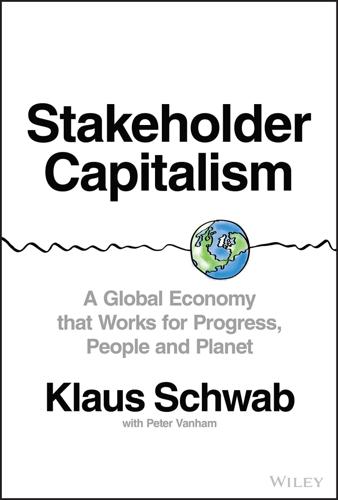
Stakeholder Capitalism: A Global Economy That Works for Progress, People and Planet
by
Klaus Schwab
and
Peter Vanham
Published 27 Jan 2021
Blame Them, Not Immigrants,” Arlie Hochschild, The Guardian, February 2018, https://www.theguardian.com/commentisfree/2018/feb/14/resentment-robots-job-stealers-arlie-hochschild. 4 The Fourth Industrial Revolution, Klaus Schwab, Penguin Random House, January 2017, https://www.penguinrandomhouse.com/books/551710/the-fourth-industrial-revolution-by-klaus-schwab/. 5 “The Future of Employment: How Susceptible Are Jobs to Computerization?” Carl Frey and Michael Osborne, Oxford University, September 2013, https://www.oxfordmartin.ox.ac.uk/downloads/academic/The_Future_of_Employment.pdf. 6 The Technology Trap: Capital, Labor, and Power in the Age of Automation, Carl Frey, Princeton University Press, June 2019, https://press.princeton.edu/books/hardcover/9780691172798/the-technology-trap. 7 “If Robots and AI Steal Our Jobs, a Universal Basic Income Could Help”, Peter H.
…
The new technologies we were witnessing, including also 3D printing, quantum computing, precision medicine, and others, I came to believe, were on par with that of the First Industrial Revolution—the steam engine—those of the Second Industrial Revolution—the combustion engine and electricity—and that of the Third Industrial Revolution—information technology and computing. They were leading to a disruption of the workforce, changing the nature of not just what we do but who we are, something I previously described in my book The Fourth Industrial Revolution.4 In their landmark 2013 study “The Future of Employment,” Carl Frey and Michael Osborne of Oxford first warned of the kind of disruption this could bring about.5 They notoriously estimated up to half of jobs would be altered in the coming years because of these new technologies, with many of them disappearing altogether. In 2019, Frey followed up on his original study with the equally eye-opening book The Technology Trap,6 showing how today's labor-replacing technologies fit into the longer history of industrial revolutions.
…
See Asian Tigers Fourth Industrial Revolution, 18, 45, 68, 71, 116, 122, 125, 142–145, 161–162, 177, 186, 201, 208, 212, 213, 237, 239 The Fourth Industrial Revolution (Schwab), 116 Foxconn (Taiwan), 59 France Compagnie de Suez join stock company of, 103 First Industrial Revolution spreading to, 131 La France Insoumise populist party of, 81 vote for right-wing populist parties (2000, 2017–2019), 84fig Yellow Vests (Gilets Jaunes) protests of, 86–87, 195 Youth for Climate movement (2017), 86 La France Insoumise (France), 81 The Freelance Isn't Free Law (New York), 243 Freelancers Union (New York), 242–243 Freelancing work, 237–238, 240–243 Freund, Caroline, 138 Frey, Carl, 116, 135 Frick Coke Company, 132 Frick, Henry, 132 Fridays for Climate strikes (2018), 149, 250 Friedman, Milton, 14, 136, 175, 205, 209 Friedrichshafen (Germany), 4–5, 6–7, 8–9, 251 Fukuyama, Francis, 15, 112 “The Future of Employment” study (2013), 116 G G7 countries, social compact breaking down in, 110–111 Gama, Vasco da, 97 Garikipati, Supriya, 224 Gates, Bill, 132 Gazivoda, Tin, 195 GDP (gross domestic product) China's increased total debt–to–GDP ratio, 62 COVID crisis impact on public debt and, 19 description and function of, 9, 24 emerging markets (2002–2019), 64–65fig formula for calculating, 24 New Zealand's COVID-19 response and impact on, 222–223 New Zealand's focus on social issues instead of, 234–236 post-World War II low level of, 105 private sector percentage of China's, 172 Simon Kuznets' warning on progress measured by, 21–25, 34, 46, 53 Singapore (1965–2019), 123–125 stakeholder model going beyond profits and, 189–193 trade globalization measured by percentage of, 16 See also GNI (gross national income); GNP (gross national product) GDP growth declining rates since the 1960s, 25–28 differentiating between global, national, and regional, 27–28 singular focus of policymaking on, 25 as “war-time metric,” 25 Gender pay equity, 243 Gender representation advocacy of, 243–244 Ireland's experiment in, 194 as stakeholder model issue, 188–189 General Data Protection Regulation (European Union), 212 General-purpose technologies (GPTs), 143 Generation Z workers, 240 German reunification, 17, 78 Germany Berlin Wall (1961–1989) dividing, 75–77, 88, 89 Christian–Democrats (CDU) political party of, 78, 79 erosion of the political center in, 80–90 extreme views replacing Volksparteien, 80, 83 female-led government leadership during COVID-19 pandemic in, 224 First Industrial Revolution spreading to, 131 following the First World War, 4 growing populism and polarizing politics (2020) in, 79, 87–88 Hartmann machine works (Chemnitz, Kingdom of Saxony), 103fig integration of East and West, 17, 78 lowering debt burden through economic growth, 31 neo-Nazi elements protesting COVID-19 responses, 87 reconstruction of post-war economy and society, 3, 7–11, 251 social reforms (1880s) in, 133 Social–Democrats (SPD) political party of, 78, 80–81 stakeholder concept adopted in, 174 “Stunde Null” (or “Zero Hour”) [May 8, 1945] ending the war, 5 vote for right-wing populist parties (2000, 2017–2019), 84fig well-managed COVID crisis response in, 79 See also East Germany; West Germany Ghana, 27, 70 Gig workers, 187–188, 237–238, 240–243 Gig Workers Rising (California), 241 Gig worker strike (2019), 187 Gig Workers United (California), 241 The Gilded Age: A Tale of Today (Twain and Warner), 133 Gini coefficient of China/India, 37fig–38, 226 Global Competitiveness Index (World Economic Forum), 189, 190 Global debt population pyramid and repayment of, 30 problem of rising, 28–31 what is included in, 28 Global economic growth ASEAN nations, 63–66, 67fig “the Asian Century,” 70–71fig Chinese economy impacting, 63–66, 70–72 declining productivity growth impact on, 33–34 Elephant Curve of Global Inequality and Growth graph, 137–138fig foundations of the post-war, 4–7 India, 66, 67–69 low GDP growth impact on, 25–28 low-interest rates and low inflation impact on, 31–33 post-World War II expansion of the, 3, 7–11, 251 rising debt impact on, 28–31 the tumultuous 1970s and 1980s, 11–15 Global economic order Davos Manifesto (1973) on new direction for, 13–14, 88, 213 impact of income inequality on the, 36–41 impact of the COVID-19 pandemic on the, 108 requirements of a post-COVID world and, 251 SARS–CoV–2 vaccines development and possible “Great Reset” of, 248 understanding the foundations of post-war, 4–7 Global financial crisis (2007–2009), 18, 34, 112–113, 122 Global Footprint Network (GFN), 19, 48fig–49 Global Infrastructure Hub, 32 Globalists, The End of Empire and the Birth of Neoliberalism (Slobodian), 181 Globalization adverse effects of, 107, 110–114 current state of, 108–114 description and implications of, 16 early beginnings and spice routes history of, 99–108 economic decline beginning in 2007, 18–19 GDP measure of trade, 16 New York Times op–ed (Schwab) on, 85 as political ideology, 108 reasons for embracing, 114 success stories from Indonesia, 93–99 three conditions required for positive, 109–110 YouGov–Bertelsmann poll (2018) on, 97 Globalization 4.0, 106–108 Globalization conditions balanced political leadership, 109–110 when functioning as social compact, 109, 110–111 when technology is congruent with economic and societal advantages, 110 Globalization history Age of Discovery (15th to 18th century), 100–102 first wave (19th century–1914), 102–105 globalization 4.0, 106–108 lessons learned from, 108–114 second and third wave (20th century), 105–106 Silk Road and spice routes, 99–102 Global population.

The Economic Singularity: Artificial Intelligence and the Death of Capitalism
by
Calum Chace
Published 17 Jul 2016
Sometimes they reserve judgement or sit on the fence, but as far as possible, I present them in order of increasing scepticism about the proposition of widespread unemployability. Frey and Osborne Carl Benedikt Frey and Michael Osborne are the directors of the Oxford Martin Programme on Technology and Employment.[xlix] Their 2013 report “The future of employment: how susceptible are jobs to computerisation?” has been widely quoted. Its approach to analysing US job data has since been used by others to analyse job data from Europe and Japan. The report analyses 2010 US Department of Labour data for 702 jobs, and in a curious blend of precision and vagueness, concludes that “47% of total US employment is in the high risk category, meaning that associated occupations are potentially automatable over some unspecified number of years, perhaps a decade or two.” 19% of the jobs were found to be at medium risk and 33% at low risk.
…
The 48% who thought there would be a net loss of jobs believed that the process was already in train, but that it would get much worse, and that inequality would become a severe problem as a result. Both sides thought that the education system is doing a poor job of preparing young people for the new world of work, and also that the future of employment is not pre-ordained, but is susceptible to good policy. Fundacion Innovacion BankInter BankInter, based in Madrid, is one of the largest banks in Spain. In 2003 it established a Foundation to promote the creation of sustainable wealth in Spain through innovation and entrepreneurship.
…
The Economist, December 4, 2003 [ccxiii] http://www.abc.net.au/news/2015-10-18/rio-tinto-opens-worlds-first-automated-mine/6863814 [ccxiv] http://www.mining.com/why-western-australia-became-the-center-of-mine-automation/ [ccxv] http://www.npr.org/sections/money/2015/02/05/382664837/map-the-most-common-job-in-every-state [ccxvi] http://www.oxfordmartin.ox.ac.uk/downloads/academic/The_Future_of_Employment.pdf [ccxvii] https://en.wikipedia.org/wiki/Horn_%26_Hardart#Automated_food [ccxviii] http://www.computerworld.com/article/2837810/automation-arrives-at-restaurants-but-dont-blame-rising-minimum-wages.html [ccxix] http://blogs.forrester.com/andy_hoar/15-04-14-death_of_a_b2b_salesman [ccxx] http://www.nuance.com/for-business/customer-service-solutions/nina/index.htm [ccxxi] http://www.zdnet.com/article/swedbank-humanises-customer-service-with-artificial-intelligence-platform/ [ccxxii] https://www.technologyreview.com/s/601215/china-is-building-a-robot-army-of-model-workers/ [ccxxiii] http://www.theguardian.com/technology/2014/sep/12/artificial-intelligence-data-journalism-media [ccxxiv] http://www.arria.com/ [ccxxv] https://www.youtube.com/watch?
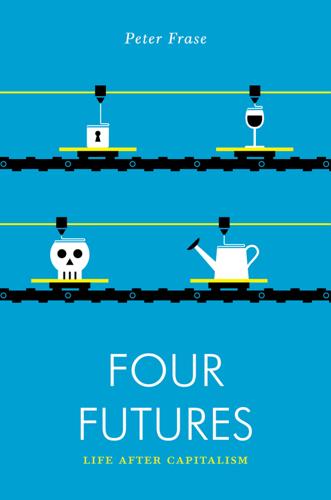
Four Futures: Life After Capitalism
by
Peter Frase
Published 10 Mar 2015
Stocker et al., “Climate Change 2013: The Physical Science Basis,” Intergovernmental Panel on Climate Change, Working Group I Contribution to the Fifth Assessment Report of the Intergovernmental Panel on Climate Change, New York: Cambridge University Press, 2013. 3Erik Brynjolfsson and Andrew McAfee, The Second Machine Age: Work, Progress, and Prosperity in a Time of Brilliant Technologies, New York: W. W. Norton, 2014. 4Carl Benedikt Frey and Michael A. Osborne, “The Future of Employment: How Susceptible Are Jobs to Computerisation?,” OxfordMartin.ox.ac.uk, 2013. 5Kevin Drum, “Welcome, Robot Overlords. Please Don’t Fire Us?,” Mother Jones, May/June 2013. 6Brynjolfsson and McAfee, The Second Machine Age, pp. 7–8. 7Frey and Osborne, “The Future of Employment.” 8Martin Ford, Rise of the Robots: Technology and the Threat of a Jobless Future, New York: Basic Books, 2015. 9Katie Drummond, “Clothes Will Sew Themselves in Darpa’s Sweat-Free Sweatshops,” Wired.com, June 6, 2012. 10Leanna Garfield, “These Warehouse Robots Can Boost Productivity by 800%,” TechInsider.io, February 26, 2016. 11Ilan Brat, “Robots Step into New Planting, Harvesting Roles,” Wall Street Journal, April 23, 2015. 12Shulamith Firestone, The Dialectic of Sex: The Case for Feminist Revolution, New York: Farrar, Straus and Giroux, 1970. 13Soraya Chemaly, “What Do Artificial Wombs Mean for Women?”

Exponential: How Accelerating Technology Is Leaving Us Behind and What to Do About It
by
Azeem Azhar
Published 6 Sep 2021
Drives China Techfins into Car Insurance – and Beyond’, Digital Finance, 3 June 2020 <https://www.digfingroup.com/insurtech-ai/> [accessed 24 February 2021]. 9 Carl Benedikt Frey and Michael Osborne, ‘The Future of Employment: How Susceptible Are Jobs to Computerisation?’, Oxford Martin School working paper, 17 September 2013 <https://www.oxfordmartin.ox.ac.uk/publications/the-future-of-employment/> [accessed 14 September 2020]. 10 Google Scholar citation search shows 7,554 citations to the Frey and Osborne research as of 21 February 2021 <https://scholar.google.com/scholar?cites=8817314921922525274&as_sdt=2005&sciodt=0,5&hl=en>. 11 ‘Forrester Predicts Automation Will Displace 24.7 Million Jobs and Add 14.9 Million Jobs By 2027’, Forrester, 3 April 2017 <https://go.forrester.com/press-newsroom/forrester-predicts-automation-will-displace-24-7-million-jobs-and-add-14-9-million-jobs-by-2027/> [accessed 14 September 2020]. 12 ‘Robots “to Replace 20 Million Factory Jobs”’, BBC News, 26 June 2019 <https://www.bbc.com/news/business-48760799> [accessed 20 September 2020]. 13 John Detrixhe, ‘Deutsche Bank’s CEO Hints Half Its Workers Could Be Replaced by Machines’, Quartz, 8 July 2019 <https://qz.com/1123703/deutsche-bank-ceo-john-cryan-suggests-half-its-workers-could-be-replaced-by-machines/> [accessed 25 September 2020]. 14 Eric J.
…
, Wall Street Journal, 1 April 2019 <https://www.wsj.com/articles/will-ai-destroy-more-jobs-than-it-creates-over-the-next-decade-11554156299> [accessed 11 January 2021] Frey, Carl Benedikt, The Technology Trap: Capital, Labor, and Power in the Age of Automation (Princeton, NJ: Princeton University Press, 2019) Frey, Carl Benedikt, and Michael Osborne, ‘The Future of Employment: How Susceptible Are Jobs to Computerisation?’, Oxford Martin School working paper, 17 September 2013 <https://www.oxfordmartin.ox.ac.uk/publications/the-future-of-employment/> [accessed 14 September 2020] Friedman, Milton, ‘A Friedman Doctrine – The Social Responsibility of Business Is to Increase Its Profits’, New York Times, 13 September 1970 <https://www.nytimes.com/1970/09/13/archives/a-friedman-doctrine-the-social-responsibility-of-business-is-to.html> [accessed 13 July 2020] Frischmann, Brett, Alain Marciano and Giovanni Battista Ramello, ‘Retrospectives: Tragedy of the Commons after 50 Years’, Journal of Economic Perspectives 33(4), 2019, pp. 211–28 <https://doi.org/10.1257/jep.33.4.211> Giddens, Anthony, The Constitution of Society: Outline of the Theory of Structuration (Berkeley, CA: University of California Press, 1986) Giuliano, Genevieve, Sanggyun Kang, and Quan Yuan, ‘Agglomeration Economies and Evolving Urban Form’, The Annals of Regional Science, 63(3), 2019, pp. 377–398 <https://doi.org/10.1007/s00168-019-00957-4> Gofman, Michael, and Zhao Jin, ‘Artificial Intelligence, Human Capital, and Innovation’, SSRN Electronic Journal, October 2019 <https://doi.org/10.2139/ssrn.3449440> Greenberg, Andy, ‘The Untold Story of NotPetya, the Most Devastating Cyberattack in History’, Wired, 22 August 2018 <https://www.wired.com/story/notpetya-cyberattack-ukraine-russia-code-crashed-the-world/> [accessed 3 August 2020] Grim, Cheryl, ‘What Drives Productivity Growth?’
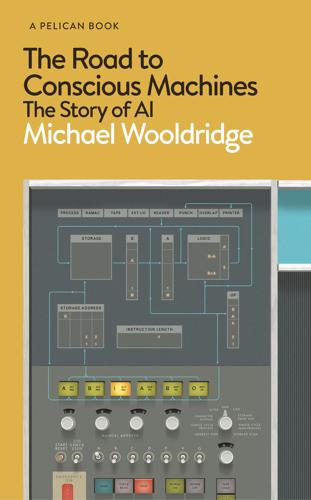
The Road to Conscious Machines
by
Michael Wooldridge
Published 2 Nov 2018
That AI will change the nature of work seems certain. What is much less clear is whether the effects will be as dramatic and fundamental as those of the Industrial Revolution, or whether they will represent a more modest change. The debate in this area was galvanized by a 2013 report entitled ‘The Future of Employment’, written by two colleagues of mine at the University of Oxford, Carl Frey and Michael Osborne.1 The rather startling headline prediction of the report was that up to 47 per cent of jobs in the United States were susceptible to automation by AI and related technologies in the relatively near future.
…
Journal of Philosophical Logic, 25(3), 1996, 307–32. 20. A. Y. Ng and S. Russell. ‘Algorithms for Inverse Reinforcement Learning’. Proceedings of the Seventeenth International Conference on Machine Learning (ICML ’00), 2000. * * * CHAPTER 8: HOW THINGS MIGHT ACTUALLY GO WRONG 1. C. B. Benedikt Frey and M. A. Osborne. ‘The Future of Employment: How Susceptible Are Jobs to Computerisation?’ Technological Forecasting and Social Change, 114, January 2017. 2. https://rodneybrooks.com/blog/. 3. https://tinyurl.com/yytefewg. 4. http://tinyurl.com/ydb9bpz4. 5. http://tinyurl.com/ycq6jk35. 6. http://tinyurl.com/y74yfk8a. 7.
…
A A* 77 À la recherche du temps perdu (Proust) 205–8 accountability 257 Advanced Research Projects Agency (ARPA) 87–8 adversarial machine learning 190 AF (Artificial Flight) parable 127–9, 243 agent-based AI 136–49 agent-based interfaces 147, 149 ‘Agents That Reduce Work and Information Overload’ (Maes) 147–8 AGI (Artificial General Intelligence) 41 AI – difficulty of 24–8 – ethical 246–62, 284, 285 – future of 7–8 – General 42, 53, 116, 119–20 – Golden Age of 47–88 – history of 5–7 – meaning of 2–4 – narrow 42 – origin of name 51–2 – strong 36–8, 41, 309–14 – symbolic 42–3, 44 – varieties of 36–8 – weak 36–8 AI winter 87–8 AI-complete problems 84 ‘Alchemy and AI’ (Dreyfus) 85 AlexNet 187 algorithmic bias 287–9, 292–3 alienation 274–7 allocative harm 287–8 AlphaFold 214 AlphaGo 196–9 AlphaGo Zero 199 AlphaZero 199–200 Alvey programme 100 Amazon 275–6 Apple Watch 218 Argo AI 232 arithmetic 24–6 Arkin, Ron 284 ARPA (Advanced Research Projects Agency) 87–8 Artificial Flight (AF) parable 127–9, 243 Artificial General Intelligence (AGI) 41 artificial intelligence see AI artificial languages 56 Asilomar principles 254–6 Asimov, Isaac 244–6 Atari 2600 games console 192–6, 327–8 augmented reality 296–7 automated diagnosis 220–1 automated translation 204–8 automation 265, 267–72 autonomous drones 282–4 Autonomous Vehicle Disengagement Reports 231 autonomous vehicles see driverless cars autonomous weapons 281–7 autonomy levels 227–8 Autopilot 228–9 B backprop/backpropagation 182–3 backward chaining 94 Bayes nets 158 Bayes’ Theorem 155–8, 365–7 Bayesian networks 158 behavioural AI 132–7 beliefs 108–10 bias 172 black holes 213–14 Blade Runner 38 Blocks World 57–63, 126–7 blood diseases 94–8 board games 26, 75–6 Boole, George 107 brains 43, 306, 330–1 see also electronic brains branching factors 73 Breakout (video game) 193–5 Brooks, Rodney 125–9, 132, 134, 243 bugs 258 C Campaign to Stop Killer Robots 286 CaptionBot 201–4 Cardiogram 215 cars 27–8, 155, 223–35 certainty factors 97 ceteris paribus preferences 262 chain reactions 242–3 chatbots 36 checkers 75–7 chess 163–4, 199 Chinese room 311–14 choice under uncertainty 152–3 combinatorial explosion 74, 80–1 common values and norms 260 common-sense reasoning 121–3 see also reasoning COMPAS 280 complexity barrier 77–85 comprehension 38–41 computational complexity 77–85 computational effort 129 computers – decision making 23–4 – early developments 20 – as electronic brains 20–4 – intelligence 21–2 – programming 21–2 – reliability 23 – speed of 23 – tasks for 24–8 – unsolved problems 28 ‘Computing Machinery and Intelligence’ (Turing) 32 confirmation bias 295 conscious machines 327–30 consciousness 305–10, 314–17, 331–4 consensus reality 296–8 consequentialist theories 249 contradictions 122–3 conventional warfare 286 credit assignment problem 173, 196 Criado Perez, Caroline 291–2 crime 277–81 Cruise Automation 232 curse of dimensionality 172 cutlery 261 Cybernetics (Wiener) 29 Cyc 114–21, 208 D DARPA (Defense Advanced Research Projects Agency) 87–8, 225–6 Dartmouth summer school 1955 50–2 decidable problems 78–9 decision problems 15–19 deduction 106 deep learning 168, 184–90, 208 DeepBlue 163–4 DeepFakes 297–8 DeepMind 167–8, 190–200, 220–1, 327–8 Defense Advanced Research Projects Agency (DARPA) 87–8, 225–6 dementia 219 DENDRAL 98 Dennett, Daniel 319–25 depth-first search 74–5 design stance 320–1 desktop computers 145 diagnosis 220–1 disengagements 231 diversity 290–3 ‘divide and conquer’ assumption 53–6, 128 Do-Much-More 35–6 dot-com bubble 148–9 Dreyfus, Hubert 85–6, 311 driverless cars 27–8, 155, 223–35 drones 282–4 Dunbar, Robin 317–19 Dunbar’s number 318 E ECAI (European Conference on AI) 209–10 electronic brains 20–4 see also computers ELIZA 32–4, 36, 63 employment 264–77 ENIAC 20 Entscheidungsproblem 15–19 epiphenomenalism 316 error correction procedures 180 ethical AI 246–62, 284, 285 European Conference on AI (ECAI) 209–10 evolutionary development 331–3 evolutionary theory 316 exclusive OR (XOR) 180 expected utility 153 expert systems 89–94, 123 see also Cyc; DENDRAL; MYCIN; R1/XCON eye scans 220–1 F Facebook 237 facial recognition 27 fake AI 298–301 fake news 293–8 fake pictures of people 214 Fantasia 261 feature extraction 171–2 feedback 172–3 Ferranti Mark 1 20 Fifth Generation Computer Systems Project 113–14 first-order logic 107 Ford 232 forward chaining 94 Frey, Carl 268–70 ‘The Future of Employment’ (Frey & Osborne) 268–70 G game theory 161–2 game-playing 26 Gangs Matrix 280 gender stereotypes 292–3 General AI 41, 53, 116, 119–20 General Motors 232 Genghis robot 134–6 gig economy 275 globalization 267 Go 73–4, 196–9 Golden Age of AI 47–88 Google 167, 231, 256–7 Google Glass 296–7 Google Translate 205–8, 292–3 GPUs (Graphics Processing Units) 187–8 gradient descent 183 Grand Challenges 2004/5 225–6 graphical user interfaces (GUI) 144–5 Graphics Processing Units (GPUs) 187–8 GUI (graphical user interfaces) 144–5 H hard problem of consciousness 314–17 hard problems 84, 86–7 Harm Assessment Risk Tool (HART) 277–80 Hawking, Stephen 238 healthcare 215–23 Herschel, John 304–6 Herzberg, Elaine 230 heuristic search 75–7, 164 heuristics 91 higher-order intentional reasoning 323–4, 328 high-level programming languages 144 Hilbert, David 15–16 Hinton, Geoff 185–6, 221 HOMER 141–3, 146 homunculus problem 315 human brain 43, 306, 330–1 human intuition 311 human judgement 222 human rights 277–81 human-level intelligence 28–36, 241–3 ‘humans are special’ argument 310–11 I image classification 186–7 image-captioning 200–4 ImageNet 186–7 Imitation Game 30 In Search of Lost Time (Proust) 205–8 incentives 261 indistinguishability 30–1, 37, 38 Industrial Revolutions 265–7 inference engines 92–4 insurance 219–20 intelligence 21–2, 127–8, 200 – human-level 28–36, 241–3 ‘Intelligence Without Representation’ (Brooks) 129 Intelligent Knowledge-Based Systems 100 intentional reasoning 323–4, 328 intentional stance 321–7 intentional systems 321–2 internal mental phenomena 306–7 Internet chatbots 36 intuition 311 inverse reinforcement learning 262 Invisible Women (Criado Perez) 291–2 J Japan 113–14 judgement 222 K Kasparov, Garry 163 knowledge bases 92–4 knowledge elicitation problem 123 knowledge graph 120–1 Knowledge Navigator 146–7 knowledge representation 91, 104, 129–30, 208 knowledge-based AI 89–123, 208 Kurzweil, Ray 239–40 L Lee Sedol 197–8 leisure 272 Lenat, Doug 114–21 lethal autonomous weapons 281–7 Lighthill Report 87–8 LISP 49, 99 Loebner Prize Competition 34–6 logic 104–7, 121–2 logic programming 111–14 logic-based AI 107–11, 130–2 M Mac computers 144–6 McCarthy, John 49–52, 107–8, 326–7 machine learning (ML) 27, 54–5, 168–74, 209–10, 287–9 machines with mental states 326–7 Macintosh computers 144–6 magnetic resonance imaging (MRI) 306 male-orientation 290–3 Manchester Baby computer 20, 24–6, 143–4 Manhattan Project 51 Marx, Karl 274–6 maximizing expected utility 154 Mercedes 231 Mickey Mouse 261 microprocessors 267–8, 271–2 military drones 282–4 mind modelling 42 mind-body problem 314–17 see also consciousness minimax search 76 mining industry 234 Minsky, Marvin 34, 52, 180 ML (machine learning) 27, 54–5, 168–74, 209–10, 287–9 Montezuma’s Revenge (video game) 195–6 Moore’s law 240 Moorfields Eye Hospital 220–1 moral agency 257–8 Moral Machines 251–3 MRI (magnetic resonance imaging) 306 multi-agent systems 160–2 multi-layer perceptrons 177, 180, 182 Musk, Elon 238 MYCIN 94–8, 217 N Nagel, Thomas 307–10 narrow AI 42 Nash, John Forbes Jr 50–1, 161 Nash equilibrium 161–2 natural languages 56 negative feedback 173 neural nets/neural networks 44, 168, 173–90, 369–72 neurons 174 Newell, Alan 52–3 norms 260 NP-complete problems 81–5, 164–5 nuclear energy 242–3 nuclear fusion 305 O ontological engineering 117 Osborne, Michael 268–70 P P vs NP problem 83 paperclips 261 Papert, Seymour 180 Parallel Distributed Processing (PDP) 182–4 Pepper 299 perception 54 perceptron models 174–81, 183 Perceptrons (Minsky & Papert) 180–1, 210 personal healthcare management 217–20 perverse instantiation 260–1 Phaedrus 315 physical stance 319–20 Plato 315 police 277–80 Pratt, Vaughan 117–19 preference relations 151 preferences 150–2, 154 privacy 219 problem solving and planning 55–6, 66–77, 128 programming 21–2 programming languages 144 PROLOG 112–14, 363–4 PROMETHEUS 224–5 protein folding 214 Proust, Marcel 205–8 Q qualia 306–7 QuickSort 26 R R1/XCON 98–9 radiology 215, 221 railway networks 259 RAND Corporation 51 rational decision making 150–5 reasoning 55–6, 121–3, 128–30, 137, 315–16, 323–4, 328 regulation of AI 243 reinforcement learning 172–3, 193, 195, 262 representation harm 288 responsibility 257–8 rewards 172–3, 196 robots – as autonomous weapons 284–5 – Baye’s theorem 157 – beliefs 108–10 – fake 299–300 – indistinguishability 38 – intentional stance 326–7 – SHAKEY 63–6 – Sophia 299–300 – Three Laws of Robotics 244–6 – trivial tasks 61 – vacuum cleaning 132–6 Rosenblatt, Frank 174–81 rules 91–2, 104, 359–62 Russia 261 Rutherford, Ernest (1st Baron Rutherford of Nelson) 242 S Sally-Anne tests 328–9, 330 Samuel, Arthur 75–7 SAT solvers 164–5 Saudi Arabia 299–300 scripts 100–2 search 26, 68–77, 164, 199 search trees 70–1 Searle, John 311–14 self-awareness 41, 305 see also consciousness semantic nets 102 sensors 54 SHAKEY the robot 63–6 SHRDLU 56–63 Simon, Herb 52–3, 86 the Singularity 239–43 The Singularity is Near (Kurzweil) 239 Siri 149, 298 Smith, Matt 201–4 smoking 173 social brain 317–19 see also brains social media 293–6 social reasoning 323, 324–5 social welfare 249 software agents 143–9 software bugs 258 Sophia 299–300 sorting 26 spoken word translation 27 STANLEY 226 STRIPS 65 strong AI 36–8, 41, 309–14 subsumption architecture 132–6 subsumption hierarchy 134 sun 304 supervised learning 169 syllogisms 105, 106 symbolic AI 42–3, 44, 181 synapses 174 Szilard, Leo 242 T tablet computers 146 team-building problem 78–81, 83 Terminator narrative of AI 237–9 Tesla 228–9 text recognition 169–71 Theory of Mind (ToM) 330 Three Laws of Robotics 244–6 TIMIT 292 ToM (Theory of Mind) 330 ToMnet 330 TouringMachines 139–41 Towers of Hanoi 67–72 training data 169–72, 288–9, 292 translation 204–8 transparency 258 travelling salesman problem 82–3 Trolley Problem 246–53 Trump, Donald 294 Turing, Alan 14–15, 17–19, 20, 24–6, 77–8 Turing Machines 18–19, 21 Turing test 29–38 U Uber 168, 230 uncertainty 97–8, 155–8 undecidable problems 19, 78 understanding 201–4, 312–14 unemployment 264–77 unintended consequences 263 universal basic income 272–3 Universal Turing Machines 18, 19 Upanishads 315 Urban Challenge 2007 226–7 utilitarianism 249 utilities 151–4 utopians 271 V vacuum cleaning robots 132–6 values and norms 260 video games 192–6, 327–8 virtue ethics 250 Von Neumann and Morgenstern model 150–5 Von Neumann architecture 20 W warfare 285–6 WARPLAN 113 Waymo 231, 232–3 weak AI 36–8 weapons 281–7 wearable technology 217–20 web search 148–9 Weizenbaum, Joseph 32–4 Winograd schemas 39–40 working memory 92 X XOR (exclusive OR) 180 Z Z3 computer 19–20 PELICAN BOOKS Economics: The User’s Guide Ha-Joon Chang Human Evolution Robin Dunbar Revolutionary Russia: 1891–1991 Orlando Figes The Domesticated Brain Bruce Hood Greek and Roman Political Ideas Melissa Lane Classical Literature Richard Jenkyns Who Governs Britain?

The Driver in the Driverless Car: How Our Technology Choices Will Create the Future
by
Vivek Wadhwa
and
Alex Salkever
Published 2 Apr 2017
Some researchers, such as Erik Brynjolfsson and Andrew McAfee of the Massachusetts Institute of Technology, see the automatons inevitably gobbling up more and more meaningful slices of our work.9 Oxford University researchers Carl Benedikt Frey and Michael A. Osborne caused a tremendous stir in September 2013, when they asserted in a seminal paper that A.I. would put 47 percent of current U.S. employment “at risk.”10 The paper, “The Future of Employment,” is a rigorous and detailed historical review of research on the effect of technology innovation upon labor markets and employment. In a recent research paper, McKinsey & Company found that “only about 5 percent of occupations could be fully automated by adapting current technology. However, today’s technologies could automate 45 percent of the activities people are paid to perform across all occupations.
…
Jason Kravarik and Sara Sidner, “The Dallas shootout, in the eyes of police,” CNN 15 July 2016, https://en.wikipedia.org/wiki/2016_shooting_of_Dallas_police_officers (accessed 21 October 2016). 9. Erik Brynjolfsson and Andrew McAfee, The Second Machine Age: Work, Progress, and Prosperity in a Time of Brilliant Technologies (rev.), W.W. Norton, 2016, http://books.wwnorton.com/books/The-Second-Machine-Age (accessed 21 October 2016). 10. Michael A. Osborne and Carl Benedikt Frey, The Future of Employment: How Susceptible Are Jobs to Computerisation?, Oxford: University of Oxford, 2013, http://futureoflife.org/data/PDF/michael_osborne.pdf (accessed 21 October 2016). 11. James Manyika, Michael Chui, and Mehdi Miremadi, “These are the jobs least likely to go to robots,” Fortune 11 July 2006, http://fortune.com/2016/07/11/skills-gap-automation. 12.
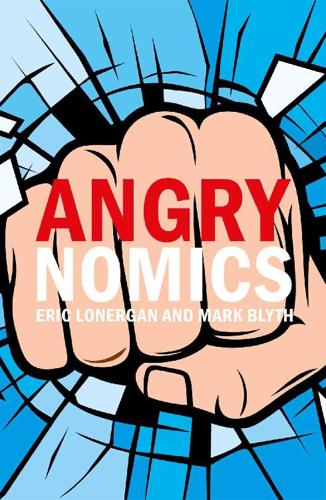
Angrynomics
by
Eric Lonergan
and
Mark Blyth
Published 15 Jun 2020
, CESifo Working Paper Series, 7159 (2018), 5. 16.Board of Governors of the Federal Reserve System, “Report on the economic wellbeing of US households in 2017”, 1; https://www.federalreserve.gov/publications/files/2017-report-economic-well-being-us-households-201805.pdf. 17.Board of Governors of the Federal Reserve System, FEDS Notes, “A wealthless recovery”; https://www.federalreserve.gov/econres/notes/feds-notes/asset-ownership-and-the-uneven-recovery-from-the-great-recession-20180913.htm. 18.Anne Case & Angus Deaton, “Mortality and morbidity in the 21st century”, Brookings Papers on Economic Activity, spring 2017; https://www.brookings.edu/wp-content/uploads/2017/08/casetextsp17bpea.pdf. 19.See Stephen Margolin & Juliet Schor, The Golden Age of Capitalism (New York: Oxford University Press, 1992). 20.See Eric Helleiner, States and the Re-emergence of Global Finance (Ithaca, NY: Cornell University Press, 1994). 21.See Juliet Johnson, The Priests of Prosperity (Ithaca, NY: Cornell University Press, 2016). 22.See “Citibank launches $100 million ad campaign”; https://www.marketingsherpa.com/article/citibank-launches-100-million-ad. 23.See Richard Wilkinson & Kate Pickett, The Spirit Level: Why Greater Equality Makes Societies Stronger (London: Allen Lane, 2009). 24.See respectively, Carl Frey & Michael Osborne, “The future of employment” (2013); https://www.oxfordmartin.ox.ac.uk/downloads/academic/The_Future_of_Employment.pdf; Bank of England, “Will a robot takeover my job”; https://www.bankofengland.co.uk/knowledgebank/will-a-robot-takeover-my-job and OECD, “Automation, skills use and training” (2018); https://www.oecd-ilibrary.org/fr/employment/automation-skills-use-and-training_2e2f4eea-en. 25.A search of the Financial Times archives from 2009 to 2020 on the topic “robots and employment” yields 403 results. 26.See Matthew Tracey & Joachim Fels, “70 is the new 65”, Pimco (2016); https://www.pimco.com/en-us/insights/viewpoints/in-depth/70-is-the-new-65-demographics-still-support-lower-rates-for-longer. 27.See Timo Fetzer, “Did austerity cause Brexit?”
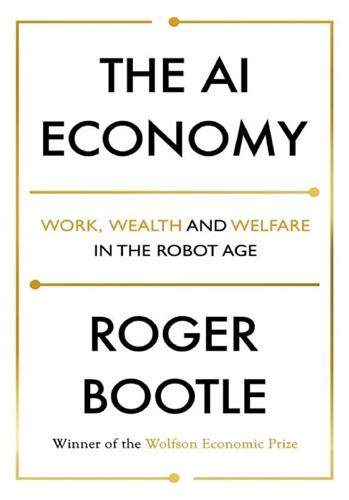
The AI Economy: Work, Wealth and Welfare in the Robot Age
by
Roger Bootle
Published 4 Sep 2019
C., Florescu, E. and The Millennium Project Team (2016), http://107.22.164.43/millennium/2015-SOF-ExecutiveSummary-English.pdf 17 Nedelkoska, L. and Quintini, G. (2018) Automation, Skills Use and Training, OECD Social, Employment and Migration. Working Papers 202, Paris: OECD Publishing, 2018, https://www.oecd-ilibrary.org/employment/automation-skills-use-and-training_2e2f4eea-en 18 Frey, C. B. and Osborne, M. A. (2013) “The Future of Employment: How Susceptible Are Jobs to Computerization?” https://www.oxfordmartin.ox.ac.uk/downloads/academic/The_Future_of_Employment.pdf 19 Quoted in the Financial Times, February 25/26, 2017. 20 Chui, M. Manyika, J. and Miremadi, M. (2015) “Four Fundamentals of Workplace Automation,” McKinsey Quarterly (November). 21 Max Tegmark has laid down three criteria for judging whether a job is more or less likely to be challenged, or replaced, by robots any time soon.
…
In other words, they are markedly lacking in imagination. These failings are not restricted to would-be visionaries past. They can also afflict us. So, we must tread extremely warily. Having said that, and having dosed ourselves with lashings of humility, and drunk deep from the well of skepticism, there is a lot that we can say about the future of employment in the new robot- and AI-dominated future. Some studies have tried to estimate the number of jobs that will disappear in particular sectors and to hazard a guess at what number of new jobs that will appear. These exercises can have some value. Indeed, I will refer to some of their results below.

WTF?: What's the Future and Why It's Up to Us
by
Tim O'Reilly
Published 9 Oct 2017
x it wants an AI to make three-fourths of management decisions: Olivia Solon, “World’s Largest Hedge Fund to Replace Managers with Artificial Intelligence,” Guardian, December 22, 2016, https://www.theguardian.com/technology/2016/dec/22/bridgewater-associates-ai-artificial-intelligence-manage ment. x Oxford University researchers estimate: Carl Benedikt Frey and Michael A. Osborne, “The Future of Employment: How Susceptible Are Jobs to Computerisation?,” Oxford Martin School, September 17, 2013, http://www.oxfordmartin.ox.ac.uk/downloads/academic/The _Future_of_Employment.pdf. x Airbnb has more rooms on offer: Andrew Cave, “Airbnb Is on Track to Be the World’s Largest Hotelier,” Business Insider, November 26, 2013, http://www.businessinsider.com/airbnb-largest-hotelier-2013–11.
…
CHAPTER 14: WE DON’T HAVE TO RUN OUT OF JOBS 298 “live wisely and agreeably and well”: John Maynard Keynes, “Economic Possibilities for Our Grandchildren,” in Essays in Persuasion (New York: Harcourt Brace, 1932), 358–73, available online from http://www.econ.yale.edu/smith/econ 116a/keynes1.pdf. 298 the world has been getting better: Max Roser and Esteban Ortiz-Ospina, “Global Extreme Poverty,” OurWorldIn Data.org, first published in 2013; substantive revision March 27, 2017, retrieved April 4, 2017, https://ourworldindata.org/extreme-poverty/. 299 once destroyed factory jobs: Carl Benedikt Frey and Michael A. Osborne, “The Future of Employment: How Susceptible Are Jobs to Computerisation,” Oxford Martin Institute, September 17, 2013, http://www.oxfordmartin.ox.ac.uk/downloads/academic/The_Future_of _Employment.pdf. 299 the age of growth is over: Robert Gordon, “The Death of Innovation, the End of Growth,” TED 2013, https://www.ted.com/talks/robert_gordon _the_death_of_innovation_the_end_of _growth. 301 something that had never been done before: Margot Lee Shetterly, Hidden Figures (New York: William Morrow, 2016). 302 well-paid human jobs: Already, in the US, 43% of the electric power generation workforce is employed in solar technologies, versus 22% of electric power generation via fossil fuels.

Utopia for Realists: The Case for a Universal Basic Income, Open Borders, and a 15-Hour Workweek
by
Rutger Bregman
Published 13 Sep 2014
See: John Markoff, “Armies of Expensive Lawyers, Replaced by Cheaper Software,” The New York Times (March 4, 2011). http://www.nytimes.com/2011/03/05/science/05legal.html 16. Warren G. Bennis first said this. Cited in: Mark Fisher, The Millionaire’s Book of Quotations (1991), p. 15. 17. Carl Benedikt Frey and Michael A. Osborne, “The Future of Employment: How Susceptible Are Jobs to Computerisation,” Oxford Martin School (September 17, 2013). http://www.oxfordmartin.ox.ac.uk/downloads/academic/The_Future_of_Employment.pdf For the calculation for Europe, see: http://www.bruegel.org/nc/blog/detail/article/1399-chart-of-the-week-54-percent-of-eu-jobs-atrisk-of-computerisation 18. Gary Marcus, “Why We Should Think About The Threat of Artificial Intelligence,” The New Yorker (October 24, 2013). http://www.newyorker.com/online/blogs/elements/2013/10/why-we-should-think-about-the-threat-of-artificial-intelligence.html 19.
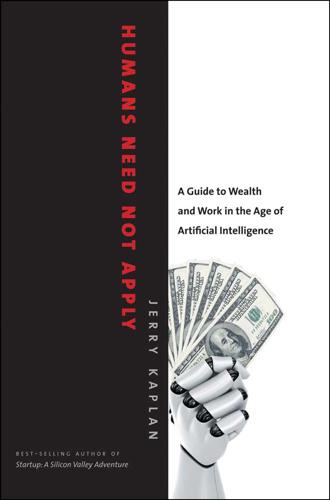
Humans Need Not Apply: A Guide to Wealth and Work in the Age of Artificial Intelligence
by
Jerry Kaplan
Published 3 Aug 2015
Washington Post, March 11, 2014, http://www.washingtonpost.com/news/morning-mix/wp/2014/03/11/just-how-common-are-pilot-suicides/?tid=pm_national_pop. 42. Carl Benedikt Frey and Michael A. Osborne, “The Future of Employment: How Susceptible Are Jobs to Computerisation?” Oxford Martin School, University of Oxford, September 17, 2013, http://www.oxfordmartin.ox.ac.uk/downloads/academic/The_Future_of_Employment.pdf. 43. “Fact Sheet on the President’s Plan to Make College More Affordable: A Better Bargain for the Middle Class,” press release, the White House, August 22, 2013, http://www.whitehouse.gov/the-press-office/2013/08/22/fact-sheet-president-s-plan -make-college-more-affordable-better-bargain-. 44.
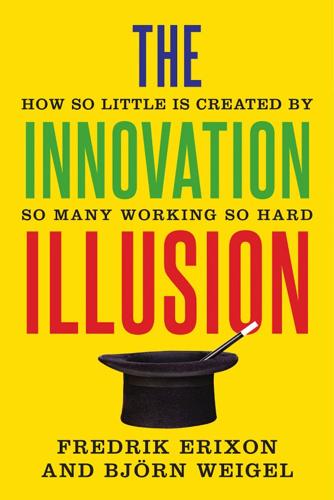
The Innovation Illusion: How So Little Is Created by So Many Working So Hard
by
Fredrik Erixon
and
Bjorn Weigel
Published 3 Oct 2016
Frey, Carl Benedikt, and Michael Osborne, “Technology at Work: The Future of Innovation and Employment.” Citi GPS: Global Perspectives & Solutions, Feb. 2015. At http://www.oxfordmartin.ox.ac.uk/downloads/reports/Citi_GPS_Technology_Work.pdf. Frey, Carl Benedikt, and Michael A. Osborne. “The Future of Employment: How Susceptible Are Jobs to Computerisation.” Paper, Sept. 17, 2013. At http://www.oxfordmartin.ox.ac.uk/downloads/academic/The_Future_of_Employment.pdf. Frum, David, “Paris Taxi Shortage: It’s about Jobs.” CNN, July 10, 2012. Fukuyama, Francis, The End of History and the Last Man. Simon & Schuster, 2006. Gabler, Alain, and Markus Poschke, “Experimentation by Firms, Distortions, and Aggregate Productivity.”
…
71.Roine and Waldenström, “On the Role of Capital Gains in Swedish Income Inequality.” 72.Konjunktur Institutet, “Lönebildningsrapporten,” 30. 73.US President, “Economic Report,” 34. 74.US President, “Economic Report,” 34. 75.Mokyr, “What Today’s Economic Gloomsayers Are Missing.” 76.Marvin, When Old Technologies Were New. 77.Frey and Osborne, “The Future of Employment,” 45. 78.Ford, Rise of the Robots, 284. 79.Kan, “Foxconn Expects Robots to Take over More Factory Work.” 80.Kan, “Foxconn Expects Robots to Take over More Factory Work.” 81.Kan, “Foxconn’s CEO Backpedals on Robot Takeover at Factories.” 82.IFR, “Robots Improve Manufacturing Success and Create Jobs.” 83.Graetz and Michaels, “Robots at Work.” 84.Fox Nation, “Obama Blames ATMs for High Unemployment.” 85.Bessen, Learning by Doing, 108. 86.Approximately in 1745 in England, and one year later in France. 87.Joyce, Ulysses, 82. 88.Rothschild, “The Sourdough Hotel.” 89.Marx and Engels, The Communist Manifesto, 12. 90.Haltiwanger, Hathaway, and Miranda, “Declining Business Dynamism in the US High-Technology Sector,” 1. 91.Andrews, Criscuolo, and Gal, “Frontier Firms, Technology Diffusion and Public Policy,” 14. 9 The Future and How to Prevent It 1.Toynbee, A Study of History: Abridgement of Volumes I–VI, 273. 2.Buiter, Rahbari, and Seydl, “The Long-Run Decline in Advanced-Economy Investment.” 3.Kotlikoff and Burns, The Clash of Generations, 229. 4.Wilson and Purushothaman, “Dreaming with BRICs.” 5.Xie, “Goldman’s BRIC Era Ends.” 6.Das, India Grows at Night. 7.Magnus, “Hitting a BRIC Wall.” 8.IMF, “Adjusting to Lower Commodity Prices.” 9.Hoenig, “Back to Basics.” 10.The Economist, “One Regulator to Rule Them All.” 11.Zingales, “Does Finance Benefit Society?”

Prediction Machines: The Simple Economics of Artificial Intelligence
by
Ajay Agrawal
,
Joshua Gans
and
Avi Goldfarb
Published 16 Apr 2018
Jha and Topol, “Adapting to Artificial Intelligence”; S. Jha, “Will Computers Replace Radiologists?” Medscape 30 (December 2016), http://www.medscape.com/viewarticle/863127#vp_1. 10. Carl Benedikt Frey and Michael A. Osborne, “The Future of Employment: How Susceptible Are Jobs to Computerisation?” Oxford Martin School, University of Oxford, September 2013, http://www.oxfordmartin.ox.ac.uk/downloads/academic/The_Future_of_Employment.pdf. 11. Truckmakers are already embedding convey capabilities in their newest vehicles. Volvo has deployed this in several tests, and Telsa’s new semi has these capabilities built in from the start.

Reinventing Capitalism in the Age of Big Data
by
Viktor Mayer-Schönberger
and
Thomas Ramge
Published 27 Feb 2018
forecast depressing employment figures: Erik Brynjolfsson and Andrew McAfee, The Second Machine Age: Work, Progress, and Prosperity in a Time of Brilliant Technologies (New York: W. W. Norton, 2016); Carl Benedikt Frey and Michael A. Osborne, The Future of Employment: How Susceptible Are Jobs to Computerisation? (Oxford, UK: Oxford Martin School, September 17, 2013), http://www.oxfordmartin.ox.ac.uk/downloads/academic/The_Future_of _Employment.pdf. advent of a “second machine age”: Brynjolfsson and McAfee, The Second Machine Age. “labor share” has declined considerably: Matthias Kehrig and Nicolas Vincent, “Growing Productivity Without Growing Wages: The Micro-Level Anatomy of the Aggregate Labor Share Decline,” CESifo Working Paper Series No. 6454, May 3, 2017, https://ssrn.com/abstract=2977787.

Tomorrow's Capitalist: My Search for the Soul of Business
by
Alan Murray
Published 15 Dec 2022
The new wave of technology, and particularly the specter of artificial intelligence, caused those fears to be raised anew. Mankind had successfully moved from farmer to factory worker, and from factory worker to knowledge worker. But if machines took over knowledge work, what then? In their important 2013 study, “The Future of Employment: How Susceptible Are Jobs to Computerisation?,” Oxford professors Carl Benedikt Frey and Michael A. Osborne began by noting that “concern over technological unemployment is hardly a recent phenomenon. Throughout history, the process of creative destruction, following technological inventions, has created enormous wealth, but also undesired disruptions.”10 They tell an amusing anecdote about William Lee, who invented the stocking frame knitting machine in 1589 as a replacement for hand knitting.
…
“Making the Office a Place People Want to Go Because They Enjoy It.” CEO Daily/Fortune, May 6, 2021. 8. Dov Seidman. How: How Why We Do Anything Means Everything. New York: Wiley, 2011. 9. Alan Murray and David Meyer. “The Impact of Remote Work.” CEO Daily/Fortune, March 3, 2021. 10. Carl Benedikt and Michael A. Osborne. “The Future of Employment: How Susceptible Are Jobs to Computerisation?” University of Oxford, September 2013. 11. Alan Murray and David Meyer. “The Great Digital Acceleration.” CEO Daily/Fortune, January 14, 2021. 12. Jeff Lawson. Ask Your Developer: How to Harness the Power of Software Developers and Win the 21st Century.

Doing Good Better: How Effective Altruism Can Help You Make a Difference
by
William MacAskill
Published 27 Jul 2015
App Academy, a three-month intensive programming school: Marcus Wohlsen, “Tuition at Learn-to-Code Boot Camp is Free—Until You Get a Job,” Wired, March 15, 2013. whether a job will be around in the future: For an in-depth analysis, see Carl B. Frey and Michael A. Osborne, “The Future of Employment: How Susceptible Are Jobs to Computerisation?” Oxford Martin School, University of Oxford, September 17, 2013, http://www.oxfordmartin.ox.ac.uk/downloads/academic/The_Future_of_Employment.pdf. David Brooks, writing in The New York Times: Brooks, David, “The Way to Produce a Person,” The New York Times, June 3, 2013. GiveDirectly has raised more than $20 million: “Financials,” GiveWell, https://www.givedirectly.org/financials.html.

The Internet Is Not the Answer
by
Andrew Keen
Published 5 Jan 2015
,” Guardian, December 17, 2013. 27 Lorraine Luk, “Foxconn Working with Google on Robotics,” Wall Street Journal, February 11, 2014. 28 Dan Rowinski, “Google’s Game of Moneyball in the Age of Artificial Intelligence,” ReadWrite.com, January 29, 2014. 29 Chunka Mui, “Google Car + Uber = Killer App,” Forbes, August 23, 2013. 30 395,000 at UPS (pressroom.ups.com/Fact+Sheets/UPS+Fact+Sheet) and 300,000 at FedEx (about.van.fedex.com/company-information). 31 Claire Cain Miller, “FedEx’s Price Rise Is a Blessing in Disguise for Amazon,” New York Times, May 9, 2014. 32 David Streitfeld, “Amazon Floats the Notion of Delivery Drones,” New York Times, December 1, 2013. 33 Charles Arthur, “Amazon Seeks US Permission to Test Prime Air Delivery Drones,” Guardian, July 11, 2014. 34 Katie Lobosco, “Army of Robots to Invade Amazon Warehouse,” CNNMoney, May 22, 2014. 35 George Packer, “Cheap Words,” New Yorker, February 17, 2014. 36 “John Naughton, Why Facebook and Google Are Buying into Drones,” Observer, April 19, 2014. 37 Reed Albergotti, “Zuckerberg, Musk Invest in Artificial-Intelligence Company,” Wall Street Journal, March 21, 2014. 38 Ibid. 39 Emily Young, “Davos 2014: Google’s Schmidt Warning on Jobs,” BBC, January 23, 2014. 40 Carl Benedikt Frey and Michael A. Osborne, “The Future of Employment: How Susceptible Are Jobs to Computerization?,” Oxford Martin Programme on the Impacts of Future Technology, September 17, 2013, oxfordmartin.ox.ac.uk/downloads/academic/The_Future_of_Employment.pdf. 41 Derek Thompson, “What Jobs Will the Robots Take?,” Atlantic, January 23, 2014. 42 Ibid. 43 Erik Larson, “Kodak Reorganization Approval Affirms Move from Cameras,” Bloomberg, August 21, 2013, bloomberg.com/news/2013-08-20/kodak-bankruptcy-reorganization-plan-approved-by-new-york.html. 44 “Kodak, Smaller and Redirected, Leaves Bankruptcy,” Associated Press, September 3, 2013. 45 Julie Creswell, “Kodak’s Fuzzy Future,” New York Times, May 3, 2013, dealbook.nytimes.com/2013/05/03/after-bankruptcy-a-leaner-kodak-faces-an-uphill-battle. 46 For a helpful timeline of Kodak’s 2013 emergence from bankruptcy, see “Key Events in the History of Eastman Kodak Company,” Wall Street Journal, September 3, 2013, nytimes.com/2013/09/04/business/kodak-smaller-and-redirected-leaves-bankruptcy.html?

A Pelican Introduction: Basic Income
by
Guy Standing
Published 3 May 2017
Stern (2016), Raising the Floor: How a Universal Basic Income Can Renew Our Economy and Rebuild the American Dream. New York: PublicAffairs. 16. Cited in N. Lee (2016), ‘How will you survive when the robots take your job?’, Engadget, 19 August. 17. C. B. Frey and M. A. Osborne (2013), ‘The future of employment: How susceptible are jobs to computerization?’ Oxford: University of Oxford. http://www.oxfordmartin.ox.ac.uk/downloads/academic/The_Future_of_Employment.pdf. 18. M. Arntz, T. Gregory and U. Zierahn (2016), ‘The risk of automation for jobs in OECD countries: A comparative analysis’. OECD Social, Employment and Migration Working Papers No. 189. Paris: Organisation for Economic Co-operation and Development. 19.

Affluence Without Abundance: The Disappearing World of the Bushmen
by
James Suzman
Published 10 Jul 2017
Lee, “The Gods Must Be Crazy but the Producers Know Exactly What They Are Doing.” Southern Africa Report (June 1985): 19–20. Chapter 18: The Promised Land 1 Carl Benedikt Frey and Michael A. Osborne, “The Future of Employment: How Susceptible Are Jobs to Computerisation?” Oxford Martin Programme on the Impacts of Future Technology, September 17, 2013. http://www.oxfordmartin.ox.ac.uk/downloads/academic/The_Future_of_Employment.pdf. On Names and Clicks NAMES In spring of 1904 the German zoologist, linguist, anatomist, and philosopher Leonard Schultze was having the adventure of a lifetime. He had spent several months traveling to German South-West Africa (now Namibia).
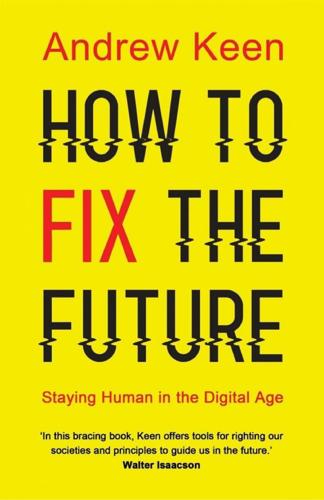
How to Fix the Future: Staying Human in the Digital Age
by
Andrew Keen
Published 1 Mar 2018
No, he acknowledges, the digital revolution hasn’t re-created the “satanic mills” of Northern England, with its armies of child laborers and appalling working conditions. Nor do the streets of New York City run anymore with the blood of dead animals. History never repeats itself. Not exactly, anyway. But the great transformation of the early twenty-first century is, nonetheless, equally challenging—particularly in terms of economic inequality and the future of employment. Karl Polanyi’s Two Nations are back. Today, however, these nations are being shaped by digital technology rather than by steam or electricity. Today, it’s smart machines—rather than Thomas More’s enclosed farmland or Marx and Engels’s mechanized factories—that are radically disrupting not only employment but the very nature of working life itself.
…
Hobsbawm, The Age of Capital, 221. 17. Christine Meisner Rosen, “The Role of Pollution and Litigation in the Development of the U.S. Meatpacking Industry, 1865–1880,” Enterprise & Society, June 2007. 18. Ibid., 212. 19. Marx and Engels, The Communist Manifesto, 32–33. 20. Carl Benedikt Frey and Michael A. Osborne, “The Future of Employment: How Susceptible Are Jobs to Computerization,” Oxford Martin School, September 2013. 21. Steve Lohr, “Robots Will Take Jobs, but Not as Fast as Some Fear, New Report Says,” New York Times, January 12, 2017. 22. Friedrich Engels, The Condition of the Working-Class in England in 1844 (Swan Sonnenschein, 1892), 70.

Rule of the Robots: How Artificial Intelligence Will Transform Everything
by
Martin Ford
Published 13 Sep 2021
Ian Sample, “Google’s DeepMind predicts 3D shapes of proteins,” The Guardian, December 2, 2018, www.theguardian.com/science/2018/dec/02/google-deepminds-ai-program-alphafold-predicts-3d-shapes-of-proteins. 4. Lyxor Robotics and AI UCITS ETF, stock market ticker ROAI. 5. See, for example: Carl Benedikt Frey and Michael Osborne, “The future of employment: How susceptible are jobs to computerisation?,” Oxford Martin School, University of Oxford, Working Paper, September 17, 2013, www.oxfordmartin.ox.ac.uk/downloads/academic/future-of-employment.pdf, p. 38. 6. Matt McFarland, “Elon Musk: ‘With artificial intelligence we are summoning the demon,’” Washington Post, October 24, 2014, www.washingtonpost.com/news/innovations/wp/2014/10/24/elon-musk-with-artificial-intelligence-we-are-summoning-the-demon/. 7.
…
Carol Graham, “Understanding the role of despair in America’s opioid crisis,” Brookings Institution, October 15, 2019, www.brookings.edu/policy2020/votervital/how-can-policy-address-the-opioid-crisis-and-despair-in-america/. 4. See, for example: Carl Benedikt Frey and Michael A. Osborne, “The future of employment: How susceptible are jobs to computerisation?,” Oxford Martin School Programme on Technology and Employment, Working Paper, September 17, 2013, www.oxfordmartin.ox.ac.uk/downloads/academic/future-of-employment.pdf, p. 38. 5. U.S. Bureau of Labor Statistics, “Unemployment rate (UNRATE),” retrieved from Federal Reserve Bank of St.

Homo Deus: A Brief History of Tomorrow
by
Yuval Noah Harari
Published 1 Mar 2015
Cope, Comes the Fiery Night: 2,000 Haiku by Man and Machine (Santa Cruz: Create Space, 2011). See also: Dormehl, The Formula, 174–80, 195–8, 200–2, 216–20; Steiner, Automate This, 75–89. 19. Carl Benedikt Frey and Michael A. Osborne, ‘The Future of Employment: How Susceptible Are Jobs to Computerisation?’, 17 September 2013, accessed 12 August 2015, http://www.oxfordmartin.ox.ac.uk/downloads/academic/The_Future_of_Employment.pdf. 20. E. Brynjolfsson and A. McAffee, Race Against the Machine: How the Digital Revolution is Accelerating Innovation, Driving Productivity, and Irreversibly Transforming Employment and the Economy (Lexington: Digital Frontier Press, 2011). 21.
…
In the twenty-first century we might witness the creation of a new massive class: people devoid of any economic, political or even artistic value, who contribute nothing to the prosperity, power and glory of society. In September 2013 two Oxford researchers, Carl Benedikt Frey and Michael A. Osborne, published ‘The Future of Employment’, in which they surveyed the likelihood of different professions being taken over by computer algorithms within the next twenty years. The algorithm developed by Frey and Osborne to do the calculations estimated that 47 per cent of US jobs are at high risk. For example, there is a 99 per cent probability that by 2033 human telemarketers and insurance underwriters will lose their jobs to algorithms.
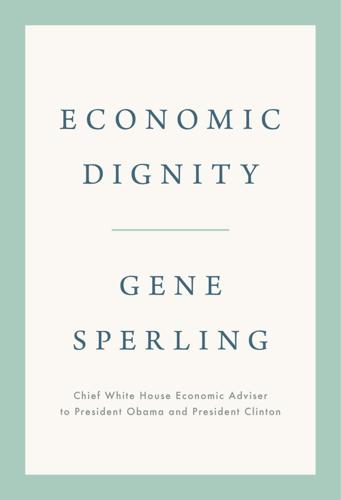
Economic Dignity
by
Gene Sperling
Published 14 Sep 2020
Aaron Smith and Monica Anderson, “Americans’ Attitudes toward a Future in Which Robots and Computers Can Do Many Human Jobs,” Pew Research Center, October 4, 2017, https://www.pewresearch.org/internet/2017/10/04/americans-attitudes-toward-a-future-in-which-robots-and-computers-can-do-many-human-jobs/. 9. Carl Benedikt Frey and Michael Osborne, “The Future of Employment: How Susceptible Are Jobs to Computerisation?,” Technological Forecasting & Social Change 114 (2017): 265, https://www.oxfordmartin.ox.ac.uk/downloads/academic/The_Future_of_Employment.pdf. 10. Mark Muro, Robert Maxim, and Jacob Whiton, Automation and Artificial Intelligence: How Machines Are Affecting People and Places (Washington, DC: Brookings Institution, 2019), 5, https://www.brookings.edu/wp-content/uploads/2019/01/2019.01_BrookingsMetro_Automation-AI_Report_Muro-Maxim-Whiton-FINAL-version.pdf. 11.
…
After months of intense negotiations led by David Rolf on the labor side, the group produced a recommendation that twenty-one of the twenty-four task force members endorsed. In 2014, the Seattle City Council unanimously approved a path to a $15 minimum wage.84 STRUCTURING SECTORAL BARGAINING Law professor Kate Andrias of the University of Michigan has noted that the future of employment law is one where the law is not just “a collection of individual rights bestowed by the state” but instead “it is a collective project to be jointly determined and enforced by workers, in conjunction with employers and the public.”85 Movements like the Fight for $15 and organizing by domestic workers have set a precedent for future negotiations.
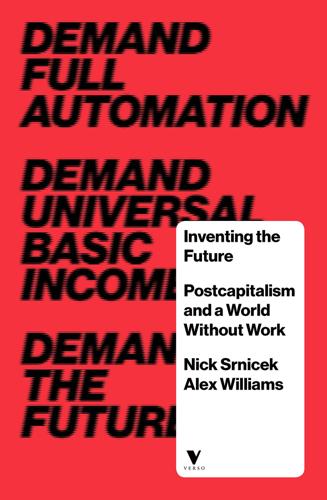
Inventing the Future: Postcapitalism and a World Without Work
by
Nick Srnicek
and
Alex Williams
Published 1 Oct 2015
The large number of relevant texts include: Ad Hoc Committee, ‘The Triple Revolution’, International Socialist Review 24: 3 (1964); Donald Michael, Cybernation: The Silent Conquest (Santa Barbara, CA: Center for the Study of Democratic Institutions, 1962); Paul Mattick, ‘The Economics of Cybernation’, New Politics 1: 4 (1962); David Noble, Progress Without People: In Defense of Luddism (Toronto: Between the Lines, 1995); Jeremy Rifkin, The End of Work: The Decline of the Global Labor Force and the Dawn of the Post-Market Era (New York: Putnam, 1997); Martin Ford, The Lights in the Tunnel: Automation, Accelerating Technology and the Economy of the Future (US: CreateSpace Independent Publishing Platform, 2009); Erik Brynjolfsson and Andrew McAfee, The Second Machine Age: Work, Progress, and Prosperity in a Time of Brilliant Technologies (New York: W. W. Norton, 2014). 16.These estimates are for the US and European labour markets, though similar numbers undoubtedly hold globally and, as we argue later, may even be worse in developing economies. Carl Benedikt Frey and Michael Osborne, The Future of Employment: How Susceptible Are Jobs to Computerisation? 2013, pdf available at oxfordmartin.ox.ac.uk; Jeremy Bowles, ‘The Computerisation of European Jobs’, Bruegel (2014), at bruegel.org; Stuart Elliott, ‘Anticipating a Luddite Revival’, Issues in Science and Technology 30: 3 (2014). 17.Karl Marx, Capital: A Critique of Political Economy, Volume I, transl.
…
This is just the way in which it unconsciously creates the material requirements of a higher mode of production.’ Karl Marx, Capital: A Critique of Political Economy, Volume III (London: Lawrence & Wishart, 1977), p. 259. 11.Marilyn Fischer, ‘Tensions from Technology in Marx’s Communist Society’, Journal of Value Inquiry 16: 2 (1982), pp. 125–6; Carl Benedikt Frey and Michael Osborne, The Future of Employment: How Susceptible Are Jobs to Computerisation? 17 September 2013, pdf available at oxfordmartin.ox.ac.uk, p. 8; Karl Marx, Capital: A Critique of Political Economy, Volume I, transl. Ben Fowkes (London: Penguin, 1990), Chapters 13–15. 12.Karl Marx, Grundrisse: Introduction to the Critique of Political Economy, transl.
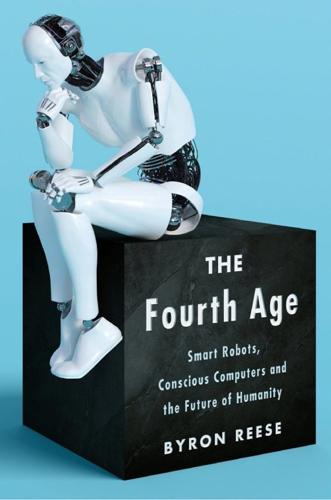
The Fourth Age: Smart Robots, Conscious Computers, and the Future of Humanity
by
Byron Reese
Published 23 Apr 2018
Will new technology destroy the current jobs too quickly? A number of studies have tried to answer this question directly. One of the very finest and certainly the most quoted was published in 2013 by Carl Benedikt Frey and Michael A. Osborne, both of Oxford University. The report, titled The Future of Employment, is seventy-two pages long, but what has been referenced most frequently in the media is a single ten-word phrase: “about 47 percent of total US employment is at risk.” Hey, who needs more than that? It made for juicy and salacious headlines, to be sure. It seemed as if every news source screamed a variant of “Half of US Jobs Will Be Taken by Computers in Twenty Years.”
…
The disconnect is clear: some of what a carpenter’s helper does will get automated, but the carpenter helper job won’t vanish; it will morph, as almost everyone else’s job will, from architect to zoologist. Sure, your iPhone can be a tour guide, but that won’t make tour guides vanish. Anyone who took the time to read past the introduction to The Future of Employment saw this. And to be clear, Frey and Osborne were very up-front. They stated, in scholar-speak, the following: We do not capture any within-occupation variation resulting from the computerisation of tasks that simply free-up time for human labour to perform other tasks. In response to the Frey and Osborne paper, the Organisation for Economic Co-operation and Development (OECD), an intergovernmental economic organization made up of nations committed to free markets and democracy, released a report in 2016 that directly counters it.
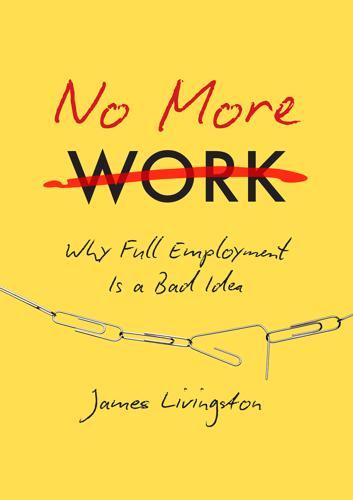
No More Work: Why Full Employment Is a Bad Idea
by
James Livingston
Published 15 Feb 2016
Hegel, my intellectual model and principal antagonist in this book, wrote to himself in an unpublished fragment: When a man has finally reached the point where he does not think he knows it better than others, that is when he becomes indifferent to what they have done badly and he is interested only in what they have done right. Damn straight. Notes Preface 1. James Livingston, Against Thrift: Why Consumer Culture Is Good for the Economy, the Environment, and Your Soul (New York: Basic Books, 2011). Introduction 1. Carl Benedikt Frey and Michael A. Osborne, The Future of Employment: How Susceptible Are Jobs to Computerisation? (Oxford: Oxford University Programme on the Impacts of Future Technology, 2013). Erik Brynjolfssen and Andrew McAfee, Race against the Machine: How the Digital Revolution Is Accelerating Innovation, Driving Productivity, and Irreversibly Transforming Employment and the Economy (Lexington, Mass.: Digital Frontier Press, 2011). 2.
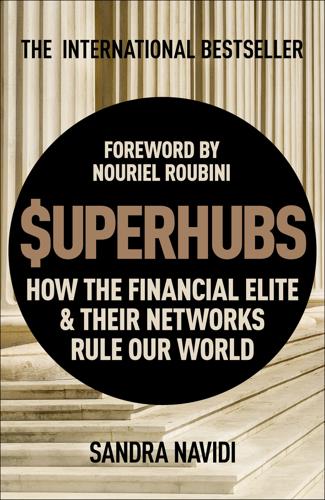
SUPERHUBS: How the Financial Elite and Their Networks Rule Our World
by
Sandra Navidi
Published 24 Jan 2017
William Cohan, House of Cards: A Tale of Hubris and Wretched Excess on Wall Street (New York: Anchor, 2010), 142. 8. Marti, “EQ More Important than IQ When It Comes to Success.” 9. Carl Benedikt Frey and Michael A. Osborne, “The Future of Employment: How Susceptible Are Jobs to Computerisation?” paper prepared for the Oxford Martin Programme on the Impacts of Future Technology, September 17, 2013, www.oxfordmartin.ox.ac.uk/downloads/academic/The_Future_of_Employment.pdf. 10. Roland Berger Strategy Consultants, “Perception Beats Performance,” press release, July 29, 2014, http://www.rolandberger.de/pressemitteilungen/Perception_beats_Performance.xhtml. 11.
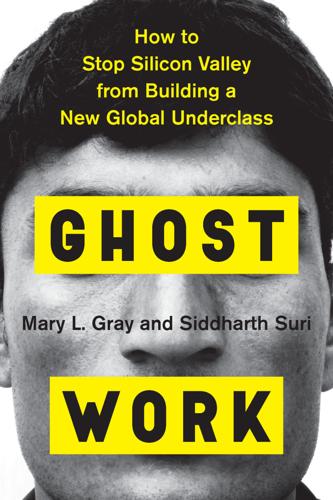
Ghost Work: How to Stop Silicon Valley From Building a New Global Underclass
by
Mary L. Gray
and
Siddharth Suri
Published 6 May 2019
Delivering services and jobs on demand could be an integral part of the future of work. It could also have unintended, potentially disastrous consequences if not designed and managed with care and attention to how it is restructuring the experience and meaning that people attach to their day jobs. Ghost Work and the Future of Employment The dismantling of employment is a deep, fundamental transformation of the nature of work. Traditional full-time employment is no longer the rule in the United States. It used to be that a worker could spend decades showing up day after day to the same office, building a career, with the expectation of getting steady pay, healthcare, sick leave, and retirement benefits in return.
…
A crowded field of companies compete to sell information services that pair computers and smart devices with artificial intelligence. Companies like Catalant (formerly HourlyNerd), Popexpert, and Upwork use APIs to deliver the larger “macro-tasks” of knowledge work, on demand, to other businesses or individuals. The future of employment wrought by automation will undoubtedly be far more disjointed than traditional nine-to-five work. Some labor economists argue that a new reality of “fissured workplaces” is the ultimate result of turning long-term employment into a series of short-term contracts throughout the 1980s and ’90s.22 And yet this newly unpredictable reality hasn’t dissuaded millions of digital workers around the world from sitting down at their keyboards day and night and performing the countless behind-the-scenes tasks that make our apps seem smarter than they are.
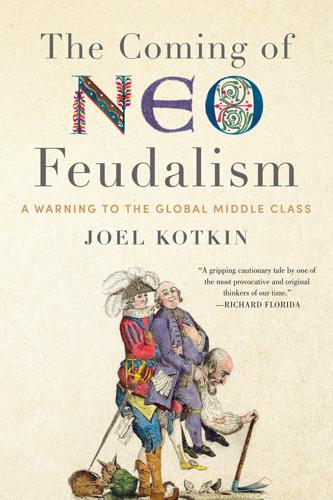
The Coming of Neo-Feudalism: A Warning to the Global Middle Class
by
Joel Kotkin
Published 11 May 2020
Atkinson, “Unfortunately, Technology Will Not Eliminate Many Jobs,” Innovation Files, August 7, 2017, https://itif.org/publications/2017/08/07/unfortunately-technology-will-not-eliminate-many-jobs; Carl Benedikt Frey and Michael A. Osborne, “The Future of Employment: How Susceptible Are Jobs to Computerisation?” Oxford Martin School, University of Oxford, September 17, 2013, https://www.oxfordmartin.ox.ac.uk/downloads/academic/The_Future_of_Employment.pdf; Greg Ip, “Workers: Fear Not the Robot Apocalypse,” Wall Street Journal, September 5, 2017, https://www.wsj.com/articles/workers-fear-not-the-robot-apocalypse-1504631505?shareToken=stabbe53f26f544566a3b04fc3361af876&reflink=article_email_share; Deirdre McCloskey, “The Myth of Technological Employment,” Reason, AugustSeptember 2017, http://reason.com/archives/2017/07/11/the-myth-of-technological-unem; Vanessa Fuhrmans, “How the Robot Revolution Could Create 21 Million Jobs,” Wall Street Journal, November 15, 2017, https://www.wsj.com/articles/how-the-robot-revolution-could-create-21-million-jobs-1510758001; Oren Cass, “Is Technology Destroying the Labor Market?”

Money: Vintage Minis
by
Yuval Noah Harari
Published 5 Apr 2018
In the twenty-first century we might witness the creation of a massive new unworking class: people devoid of any economic, political or even artistic value, who contribute nothing to the prosperity, power and glory of society. This ‘useless class’ will not be merely unemployed – it will be unemployable. In September 2013 two Oxford researchers, Carl Benedikt Frey and Michael A. Osborne, published ‘The Future of Employment’, in which they surveyed the likelihood of different professions being taken over by computer algorithms within the next twenty years. The algorithm developed by Frey and Osborne to do the calculations estimated that 47 per cent of US jobs are at high risk. For example, there is a 99 per cent probability that by 2033 human telemarketers and insurance underwriters will lose their jobs to algorithms.

Augmented: Life in the Smart Lane
by
Brett King
Published 5 May 2016
Those with a negative view of the disruptive nature of AI argue that there will be a net loss of employment for the first time in 250 years as a result of technological advancement. There’s only so many AI or robot ethicists and robot psychologists that we’ll need in the Augmented Age. A study released by Oxford Martin School’s Programme on the Impacts of Future Technology entitled “The future of employment: how susceptible are jobs to computerisation?”7 evaluated 702 jobs on a typical online career network, classifying them based on how likely they are to be computerised. The skills and level of education required for each job were taken into consideration too. These features were weighted according to how automatable they were, and according to the engineering obstacles currently preventing automation or computerisation.
…
In 1950, the bank’s checking accounts, known as current accounts in other parts of the world, were growing at the rate of 23,000 new accounts per month, and before introducing ERMA, its banks were forced to close their doors at 2 p.m. to cope with manual processing. 6 Image credit: Day in the Glass video by Corning 7 The research paper is available at http://www.oxfordmartin.ox.ac.uk/downloads/academic/The_Future_of_Employment.pdf. 8 These are jobs with 0.98/0.99 probability of disruption through technology. Based on a ±2 per cent confidence interval, this basically is a statistical certainty. 9 “AI, Robotics, and the Future of Jobs,” Pew Research Center, 6 August 2014. 10 http://cleantechnica.com/2014/04/24/us-energy-capacity-grew-an-astounding-418-from-2010-2014/ 11 http://www.americanprogress.org/issues/green/report/2014/05/29/90551/rooftop-solar-adoption-in-emerging-residential-markets/ 12 A prosumer is both a producer and consumer. 13 Google Green 14 See GreenTechMedia.com analysis, http://www.greentechmedia.com/articles/read/Utility-Scale-Solar-Reaches-Cost-Parity-With-Natural-Gas-Throughout-America. 15 Alissa Walker, “Tesla’s Gigafactory isn’t Big Enough to Make Its Preordered Batteries,” Gizmodo, 8 May 2015. 16 NBAD, University of Cambridge and PwC, “Financing the Future of Energy,” PV Magazine, 2 March 2015. 17 “Enter the entrepreneurs,” Mintel, 19 November 2014. 18 Cornerstone OnDemand Survey, November 2014. 19 “Generation Y and the Gigging Economy,” Elance, January 2014. 20 Check out https://workfrom.co/. 21 For more on work patterns throughout history, go to https://eh.net/encyclopedia/hours-of-work-in-u-s-history/. 22 “Solving the Mystery of Gen Y Job Hoppers,” Business News Daily, 22 August 2014. 23 Pew Research 2014 24 For more on Jordan Greenhall, go to http://reinventors.net/content/jordan-greenhall/. 25 Statistics taken from http://blog.autismspeaks.org/2010/10/22/got-questions-answers-to-your-questions-from-the-autism-speaks%E2%80%99-science-staff-2/. 26 See www.slate.com/articles/news_and_politics/explainer/2013/01/average_age_of_members_of_u_s_congress_are_our_senators_and_representatives.html. 27 “The 113th congress is historically good at not passing bills,” Washington Post, 9 July 2014.

The Industries of the Future
by
Alec Ross
Published 2 Feb 2016
During the recent recession: Erik Brynjolfsson and Andrew McAfee, Race against the Machine: How the Digital Revolution Is Accelerating Innovation, Driving Productivity, and Irreversibly Transforming Employment and the Economy (Lexington, MA: Digital Frontier, 2011). Two Oxford University professors: Carl Benedikt Frey and Michael A. Osborne, “The Future of Employment: How Susceptible Are Jobs to Computerisation?” Oxford Martin School, 2013, http://www.oxfordmartin.ox.ac.uk/downloads/academic/The_Future_of_Employment.pdf. It measures the shape and size of the customer’s head: Ibid. By way of illustration: “Reinventing Low Wage Work: The Restaurant Workforce in the United States,” Aspen Institute, October 30, 2014, http://www.aspenwsi.org/wordpress/wp-content/uploads/The-Restaurant-Workforce-in-the-United-States.pdf.

A World Without Work: Technology, Automation, and How We Should Respond
by
Daniel Susskind
Published 14 Jan 2020
The origins of this quotation are contested. The earliest recorded version of it comes from the Nobel Prize–winning economist Paul Samuelson, but Samuelson himself later attributed it to Keynes. See http://quoteinvestigator.com/2011/07/22/keynes-change-mind/. 29. Carl Frey and Michael Osborne, “The Future of Employment: How Susceptible Are Jobs to Computerisation?,” Technological Forecasting and Social Change 114 (January 2017): 254–80. 30. McKinsey Global Institute, “A Future That Works: Automation, Employment, and Productivity,” January 2017. 31. James Bessen, an economist at Boston University, was perhaps the first to note this. 32.
…
Freud, Sigmund. Civilization and Its Discontents. New York: W. W. Norton, 2010. Freund, Caroline, and Sarah Oliver. “The Origins of the Superrich: The Billionaire Characteristics Database.” Peterson Institute for International Economics 16, no. 1 (2016). Frey, Carl, and Michael Osborne. “The Future of Employment: How Susceptible Are Jobs to Computerisation?” Technological Forecasting and Social Change 114 (January 2017): 254–80. Frey, Carl, Michael Osborne, Craig Holmes, et al. “Technology at Work v2.0: The Future Is Not What It Used to Be.” Oxford Martin School and Citi (2016). Friedman, Benjamin M.

Genius Makers: The Mavericks Who Brought A. I. To Google, Facebook, and the World
by
Cade Metz
Published 15 Mar 2021
This system decided when to turn on: Ibid. The Google data centers were so large: Ibid. automated technologies would soon cut a giant swath through the job market: Carl Benedikt Frey and Michael A. Osborne, “The Future of Employment: How Susceptible Are Jobs to Computerisation?” Working paper, Oxford Martin School, September 2013, https://www.oxfordmartin.ox.ac.uk/downloads/academic/The_Future_of_Employment.pdf. “You have been Schmidhubered”: Ashlee Vance, “This Man Is the Godfather the AI Community Wants to Forget,” Bloomberg Businessweek, May 15, 2018, https://www.bloomberg.com/news/features/2018-05-15/google-amazon-and-facebook-owe-j-rgen-schmidhuber-a-fortune.

The Blockchain Alternative: Rethinking Macroeconomic Policy and Economic Theory
by
Kariappa Bheemaiah
Published 26 Feb 2017
Sidebar 3-1: How Technology is Replacing Skills and Tasks Source: “Inequality, Technology and Job Polarization of the Youth Labor Market in Europe” (Bheemaiah & Smith, 2015). The growth of information and communication technologies (ICTs) has had broad encompassing effects on various sectors of employment, education, and societal structures. Understanding the dynamics of technology’s impact on the future of employment thus requires a holistic analysis of the range of tasks currently being automated in various sectors of employment. This in turn provides us with a heuristic connection between education, employment, income levels, and ICT. The impact technology, and more specifically ICT technology , has had on inequality and changing the structural foundations of the labor market, has been a central theme for researchers for quite some time (see, Acemoglu, 2010; Autor et al., 2003; Michaels et al., 2010).
…
Mazzucato, Rethinking Capitalism: Economics and Policy for Sustainable and Inclusive Growth (pp. 47–65). Wiley. Nir Jaimovich, H. E. (2012). The Trend is the Cycle: Job Polarization and Jobless Recoveries. Cambridge, MA: National Bureau of Economic Research (NBER). OECD. (2010). SMEs, Entrepreneurship and Innovation . OECD. Osborne, C. B. (2013). The Future of Employment: How susceptible are jobs to computerisation? Oxford: Oxford Martin School. Paine, T. (1795). Agrarian Justice . Retrieved from Geolibertarian: http://geolib.com/essays/paine.tom/agjst.html Paul Beaudry, D. A. (2013). The Great Reversal in the Demand for Skill and Cognitive Tasks. Cambridge, MA: National Bureau of Economic Research (NBER) Working Paper 18901.

Them and Us: How Immigrants and Locals Can Thrive Together
by
Philippe Legrain
Published 14 Oct 2020
, Center for Global Development Working Paper 359, March 2014. https://www.cgdev.org/sites/default/files/does-development-reduce-migration_final_0.pdf 3 Gordon Hanson, Chen Liu and Craig McIntosh, ‘The Rise and Fall of US Low-Skilled Immigration’, NBER Working Paper 23753, August 2017. https://www.nber.org/papers/w23753 4 Gordon Hanson and Craig McIntosh, ‘Is the Mediterranean the New Rio Grande? US and EU Immigration Pressures in the Long Run’, NBER Working Paper 22622, September 2016. https://www.nber.org/papers/w22622 5 Carl Benedikt Frey and Michael A. Osborne, ‘The Future of Employment: How Susceptible are Jobs to Computerisation?’, 17 September 2013. https://www.oxfordmartin.ox.ac.uk/downloads/academic/The_Future_of_Employment.pdf 6 ‘Will a robot really take your job?’, The Economist, 27 June 2019. https://www.economist.com/business/2019/06/27/will-a-robot-really-take-your-job 7 Melanie Arntz, Terry Gregory and Ulrich Zierahn, ‘The risk of automation for jobs in OECD countries: A comparative analysis’, OECD Social, Employment and Migration Working Paper 189, May 2016. https://doi.org/10.1787/5jlz9h56dvq7-en 8 For instance, consultants at McKinsey estimate that AI will both displace and create around 300,000 jobs a year in the 2020s in Europe’s ‘digital front-runners’. https://www.mckinsey.com/~/media/mckinsey/featured%20insights/europe/shaping%20the%20future%20of%20work%20in%20europes%20nine%20digital%20front%20runner%20countries/shaping-the-future-of-work-in-europes-digital-front-runners.ashx 9 Richard Baldwin, The Great Convergence: Information Technology and the New Globalization, Harvard, 2016. 10 See kwiziq.com 11 Richard Baldwin, The Great Convergence. 12 UNHCR, ‘Global Trends 2019’. https://www.unhcr.org/globaltrends2019/ 13 Cristina Cattaneo and Giovanni Peri, ‘The Migration Response to Increasing Temperatures’, NBER Working Paper 21622, October 2015. https://www.nber.org/papers/w21622.pdf 14 Jonathan Blitzer, ‘How Climate Change is Fuelling the US Border Crisis’, New Yorker, 3 April 2019. https://www.newyorker.com/news/dispatch/how-climate-change-is-fuelling-the-us-border-crisis 15 UK Government Office for Science, ‘Foresight: Migration and Global Environmental Change’, 2011. https://assets.publishing.service.gov.uk/government/uploads/system/uploads/attachment_data/file/287722/11-1115-migration-and-global-environmental-change-summary.pdf 16 Guy J.
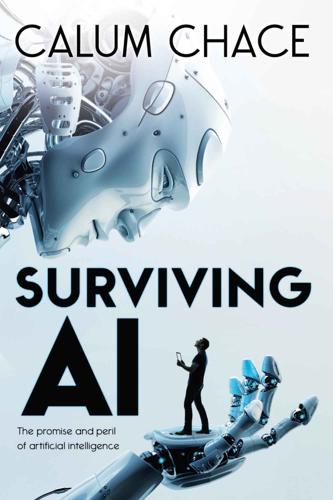
Surviving AI: The Promise and Peril of Artificial Intelligence
by
Calum Chace
Published 28 Jul 2015
v=Skfw282fJak (13) The Economist, December 4, 2003 (14) Douglas Adams, The Salmon of Doubt (15) http://www.wired.com/2014/10/future-of-artificial-intelligence/ (16) http://lazooz.org/ (17) https://www.hrw.org/reports/2012/11/19/losing-humanity (18) http://www.ifr.org/industrial-robots/statistics/ (19) “Economic possibilities for our grandchildren”: http://www.econ.yale.edu/smith/econ116a/keynes1.pdf (20) https://www.youtube.com/watch?v=HW5Fvk8FNOQ (21) http://www.oxfordmartin.ox.ac.uk/downloads/academic/The_Future_of_Employment.pdf (22) http://www.dailymail.co.uk/sciencetech/article-2981946/Self-driving-cars-30-cities-2017-Pilot-projects-aims-mass-roll-driverless-vehicles-safe-they.html (23) http://www.alltrucking.com/faq/truck-drivers-in-the-usa/ (24) http://www.bls.gov/ooh/transportation-and-material-moving/bus-drivers.htm (25) http://www.bls.gov/ooh/transportation-and-material-moving/taxi-drivers-and-chauffeurs.htm (26) http://www.cristo-barrios.com/discografia/iamus-2/?

Warnings
by
Richard A. Clarke
Published 10 Apr 2017
Quora, https://www.quora.com/Is-AI-an-existential-threat-to-humanity/answer/Andrew-Ng (accessed Oct. 8, 2016). 24. The study looks at jobs at risk from weak AI and robotics. Carl Benedikt Frey and Michael A. Osbourne, “The Future of Employment: How Susceptible Are Jobs to Computerisation?” Sept. 17, 2013, Oxford Martin School, www.oxfordmartin.ox.ac.uk/downloads/academic/The_Future_of_Employment.pdf (accessed Oct. 8, 2016). 25. Nicholas Carr, The Glass Cage: Automation and Us (New York: Norton, 2014), reviewed in Sean Braswell, “All Rise for Chief Justice Robot!” Ozy.com, www.ozy.com/immodest-proposal/all-rise-for-chief-justice-robot/41131 (accessed Oct. 8, 2016). 26.

Selfie: How We Became So Self-Obsessed and What It's Doing to Us
by
Will Storr
Published 14 Jun 2017
There are 1.7 million truck drivers in the US: ‘Robots could replace 1.7 million American truckers in the next decade’, Natalie Kitroeff, Los Angeles Times, 25 September 2016. by 2033, nearly half of all US jobs: ‘The Future of Employment: How Susceptible are Jobs to Computerisation?’, Carl Benedikt Frey et al., 17 September 2013. Available at: www.oxfordmartin.ox.ac.uk/downloads/academic/The_Future_of_Employment.pdf. polarization between left and right has been increasing inexorably: The Politics of Resentment, Katherine J. Cramer (University of Chicago Press, 2016), p. 2. One investigation found that in its final three months: ‘Viral Fake Election News Outperformed Real News On Facebook In Final Months Of The US Election’, Craig Silverman, BuzzFeed, 16 November 2016.

The Lonely Century: How Isolation Imperils Our Future
by
Noreena Hertz
Published 13 May 2020
Arielle Pardes, ‘Instacart Workers Are Still Waiting for Those Safety Supplies’, Wired, 18 April 2020, https://www.wired.com/story/instacart-delivery-workers-still-waiting-safety-kits/. 74 Mark Muro, Robert Maxim, and Jacob Whiton, ‘Automation and Artificial Intelligence: How machines are affecting people and places’, Brookings, 24 January 2019, https://www.brookings.edu/research/automation-and-artificial-intelligence-how-machines-affect-people-and-places/; see also Tom Simonite, ‘Robots Will Take Jobs From Men, the Young, and Minorities’, Wired, 24 January 2019, https://www.wired.com/story/robots-will-take-jobs-from-men-young-minorities/. 75 Cate Cadell, ‘At Alibaba’s futuristic hotel, robots deliver towels and mix cocktails’, Reuters, 22 January 2019, https://www.reuters.com/article/us-alibaba-hotels-robots/at-alibabas-futuristic-hotel-robots-deliver-towels-and-mix-cocktails-idUSKCN1PG21W. 76 The precise figure is 47%. Carl Benedikt Frey and Michael A. Osborne, ‘The Future of Employment: How Susceptible are Jobs to Computerisation?’, Technological Forecasting and Social Change 114 (2017): 254–280, https://www.oxfordmartin.ox.ac.uk/downloads/academic/The_Future_of_Employment.pdf. 77 Carl Benedikt Frey, ‘Covid-19 will only increase automation anxiety’, Financial Times, 21 April 2020, https://www.ft.com/content/817228a2-82e1-11ea-b6e9-a94cffd1d9bf. 78 PA Media, ‘Bosses speed up automation as virus keeps workers home’, Guardian, 30 March 2020, https://www.theguardian.com/world/2020/mar/30/bosses-speed-up-automation-as-virus-keeps-workers-home; Peter Bluestone, Emmanuel Chike and Sally Wallace, ‘The Future of Industry and Employment: COVID-19 Effects Exacerbate the March of Artificial Intelligence’, The Center for State and Local Finance, 28 April 2020, https://cslf.gsu.edu/download/covid-19-ai/?
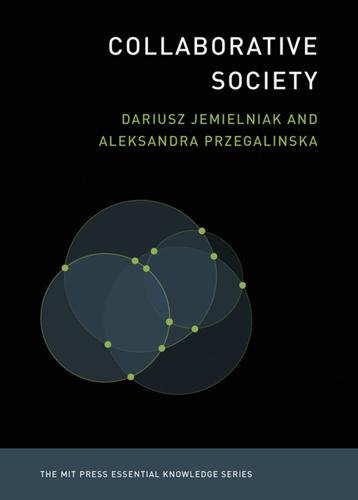
Collaborative Society
by
Dariusz Jemielniak
and
Aleksandra Przegalinska
Published 18 Feb 2020
We are entering an age of networked individualism fostered by perpetual online connectedness.35 It relies on a highly cooperative collective, irrespective of any financial dimension. Unsurprisingly, the future development of collaborative society likely depends on the performance of Big Data analytics, the use of machine learning, and the development of the Internet of Things. There remain, however, other significant factors to consider, including the future of employment in the context of ongoing automatization (and the role of the state in forthcoming regulations), as well as the growing (or declining) willingness of people to collaborate, help others, and share their values and resources. With this book we aspire to present a balanced, unbiased view of the collaborative aspects of new technologies: not just another take on collaborative society embedded only in critical theory but rather a forum to discuss potential future scenarios regarding open collaboration as a social phenomenon.
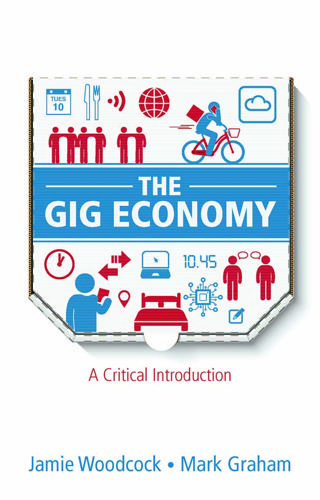
The Gig Economy: A Critical Introduction
by
Jamie Woodcock
and
Mark Graham
Published 17 Jan 2020
Available at: https://www.wired.com/2015/10/why-homejoy-failed/ Fear, C. (2018) ‘Without our brain and muscle not a single wheel can turn’: The IWW Couriers Network. Notes from Below, 3. Available at: https://notesfrombelow.org/article/without-our-brain-and-muscle Fredman, S. (2003) Women at work: The broken promise of flexicurity. Industrial Law Journal, 33(4): 229–319. Frey, C.B. and Osborne, M.A. (2017) The future of employment: How susceptible are jobs to computerisation? Technological Forecasting and Social Change, 114: 254–80. Fudge, J. (2017) The future of the standard employment relationship: Labour law, new institutional economics and old power resource theory. Journal of Industrial Relations, 59(3): 374–92.

Futureproof: 9 Rules for Humans in the Age of Automation
by
Kevin Roose
Published 9 Mar 2021
In 1928, The New York Times ran an article Evans Clark, “March of the Machine Makes Idle Hands,” New York Times, February 26, 1928. Marvin Minsky, the MIT researcher Brad Darrach, “Meet Shaky, the First Electronic Person,” Life, November 20, 1970. Oxford University study Carl Benedikt Frey and Michael A. Osborne, “The Future of Employment: How Susceptible Are Jobs to Computerisation?,” Oxford Martin Programme on Technology and Employment, September 17, 2013. By 2017, three in four American adults believed Gallup and Northeastern University, “Optimism and Anxiety: Views on the Impact of Artificial Intelligence and Higher Education’s Response,” 2017.

The Age of Surveillance Capitalism
by
Shoshana Zuboff
Published 15 Jan 2019
Bulletin of EATCS 3, no. 120 (2016), http://bulletin.eatcs.org/index.php/beatcs/article/view/467; Carl Benedikt Frey and Michael Osborne, “The Future of Employment: How Susceptible Are Jobs to Computerisation?” Technological Forecasting and Social Change 114 (September 17, 2013): 254–80; Seth G. Benzell et al., “Robots Are Us: Some Economics of Human Replacement” (National Bureau of Economic Research, 2015), http://www.nber.org/papers/w20941; Carl Benedikt Frey, “Doing Capitalism in the Digital Age,” Financial Times, October 1, 2014, https://www.ft.com/content/293780fc-4245-11e4-9818-00144feabdc0. 14. Frey and Osborne, “The Future of Employment”; Martin Krzywdzinski, “Automation, Skill Requirements and Labour-Use Strategies: High-Wage and Low-Wage Approaches to High-Tech Manufacturing in the Automotive Industry,” New Technology, Work and Employment 32, no. 3 (2017): 247–67, https://doi.org/10.1111/ntwe.12100; Frey, “Doing Capitalism”; William Lazonick, “Labor in the Twenty-First Century: The Top 0.1% and the Disappearing Middle-Class” (working paper, Institute for New Economic Thinking, February 2015), https://www.ineteconomics.org/research/research-papers/labor-in-the-twenty-first-century-the-top-0-1-and-the-disappearing-middle-class; Dirk Antonczyk, Thomas DeLeire, and Bernd Fitzenberger, “Polarization and Rising Wage Inequality: Comparing the U.S. and Germany” (IZA Discussion Paper, Institute for the Study of Labor, March 2010), https://ideas.repec.org/p/iza/izadps/dp4842.html; Erik Brynjolfsson and Andrew McAfee, The Second Machine Age: Work, Progress, and Prosperity in a Time of Brilliant Technologies (New York: W.
…
Frey and Osborne’s much-cited 2013 study of technological unemployment sounded the same theme: “Moreover, a company called SmartAction now provides call computerisation solutions that use ML technology and advanced speech recognition to improve upon conventional interactive voice response systems, realising cost savings of 60 to 80 percent over an outsourced call center consisting of human labour.” See Carl Benedikt Frey and Michael Osborne, “The Future of Employment: How Susceptible Are Jobs to Computerisation?” Technological Forecasting and Social Change 114 (2013): 254–80. See also a follow-up study: Philipp Brandes, Roger Wattenhofer, and Stefan Schmid, “Which Tasks of a Job Are Susceptible to Computerization?” Bulletin of EATCS 3, no. 120 (2016), http://bulletin.eatcs.org/index.php/beatcs/article/view/467. 15.
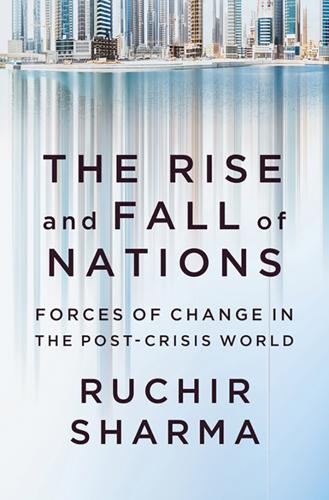
The Rise and Fall of Nations: Forces of Change in the Post-Crisis World
by
Ruchir Sharma
Published 5 Jun 2016
Hokenson, “Retiring the Current Model of Retirement,” Hokenson Research, March 2004. 5 Andrew Mason, “Demographic Transition and Demographic Dividends in Developing and Developed Countries,” United Nations Expert Group Meeting on Social and Economic Implications of Changing Population Age Structures, August 31–September 2, 2005. 6 “Women, Business, and the Law 2014,” World Bank, 2013. 7 Peter Hessler, “Learning to Speak Lingerie,” New Yorker, August 10, 2015. 8 “Fair Play: More Equal Laws Boost Female Labor Force Participation,” International Monetary Fund, 2015. 9 Jim Yong Kim, “CNBC Excerpts: CNBC’s Sara Eisen Speaks with World Bank Group President Jim Yong Kim on CNBC’s ‘Squawk Alley’ Today,” transcript of interview by Sara Eisen, CNBC, October 1 2015. 10 Caglar Ozden and Mathis Warner, “Immigrants versus Natives? Displacement and Job Creation,” World Bank, 2014. 11 BCA Research, “The End of Europe’s Welfare State,” Weekly Report, June 26, 2015. 12 Carl Benedikt Frey and Michael Osborne, “The Future of Employment: How Susceptible Are Jobs to Computerisation?,” Oxford University Programme on the Impacts of Future Technology, September 17, 2013. 13 David Rotman, “How Technology Is Destroying Jobs,” MIT Technology Review, June 12, 2013. 14 John Markoff, “The Next Wave,” Edge, July 16, 2015. Chapter 2: The Circle of Life 1 Fareed Zakaria, The Post-American World and the Rise of the Rest (New York: Norton, 2008). 2 Jonathan Wheatley, “Brazil’s Leader Blames White People for Crisis,” Financial Times, March 27, 2009. 3 Global Emerging Markets Equity Team, “Tales from the Emerging World: The Myths of Middle-Class Revolution,” Morgan Stanley Investment Management, July 16, 2013. 4 “The Quest for Prosperity,” Economist, May 15, 2007. 5 Saeed Naqvi, “A Little Left of Self Interest,” The Friday Times, June 26, 2015. 6 William Easterly, The Tyranny of Experts: Economists, Dictators, and the Forgotten Rights of the Poor (New York: Basic Books, 2014).
…
“Tracing Out the U-Shape Relationship Between Famale Labor Force Participation Rate and Economic Development for Pakistan.” International Journal of Social Economics 36, nos. 1–2 (2009): 182–98. Fernandes, Sharon. “India, Second Biggest Loser of Rich Citizens.” Times of India, July 14, 2015. Frey, Carl Benedikt, and Michael Osborne. “The Future of Employment: How Susceptible Are Jobs to Compensation.” Oxford Martin School, September 17, 2013). Fulwood, Alice, and Edward Teather. “Malaysia by the Numbers.” UBS Research, October 2015. Garland, Kris. “Demographics Matter.” Strategas, September 22, 2015. “Gary Marcus on the Future of Artificial Intelligence and the Brain.”

The Third Pillar: How Markets and the State Leave the Community Behind
by
Raghuram Rajan
Published 26 Feb 2019
Garry Kasparov, “The Chess Master and the Computer,” The New York Review of Books, February 11, 2010, http://www.nybooks.com/articles/2010/02/11/the-chess-master-and-the-computer/; Carl Benedikt Frey and Michael A. Osborne, “The Future of Employment: How Susceptible are Jobs to Computerization?,” Oxford Martin School (September 2013), https://www.oxfordmartin.ox.ac.uk/downloads/academic/The_Future_of_Employment.pdf. CHAPTER 11: REINVIGORATING THE THIRD PILLAR 1. Peter Coy, “Keeping Up With the Joneses: Neighbors of Lottery Winners Are More Likely to Go Bankrupt,” Bloomberg Businessweek, May 29, 2018, https://www.bloomberg.com/news/articles/2018-05-29/keeping-up-with-the-joneses-neighbors-of-lottery-winners-are-more-likely-to-go-bankrupt. 2.

The Singularity Is Nearer: When We Merge with AI
by
Ray Kurzweil
Published 25 Jun 2024
BACK TO NOTE REFERENCE 12 Bureau of Transportation Statistics, Transportation Economic Trends, US Department of Transportation, accessed April 20, 2023, https://data.bts.gov/stories/s/caxh-t8jd. BACK TO NOTE REFERENCE 13 Carl Benedikt Frey and Michael A. Osborne. “The Future of Employment: How Susceptible Are Jobs to Computerisation?” (Oxford Martin School, September 17, 2013), 2, 36–38, https://www.oxfordmartin.ox.ac.uk/downloads/academic/The_Future_of_Employment.pdf. BACK TO NOTE REFERENCE 14 Frey and Osborne, “Future of Employment: How Susceptible Are Jobs to Computerisation?,” 57–72. BACK TO NOTE REFERENCE 15 Frey and Osborne, “Future of Employment: How Susceptible Are Jobs to Computerisation?
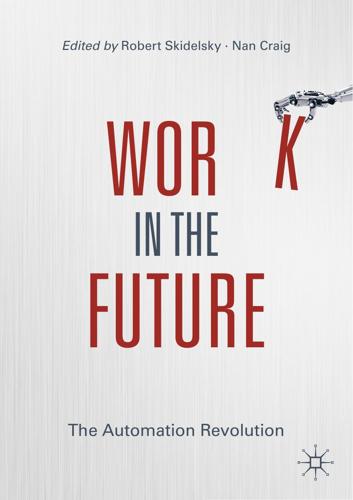
Work in the Future The Automation Revolution-Palgrave MacMillan (2019)
by
Robert Skidelsky Nan Craig
Published 15 Mar 2020
The Technology Trap: Capital, Labor, and Power in the Age of Automation. Princeton, NJ: Princeton University Press. Frey, C. B., Berger, T., & Chen, C. (2018). Political Machinery: Did Robots Swing the 2016 US Presidential Election? Oxford Review of Economic Policy, 34(3), 418–442. Frey, C. B., & Osborne, M. A. (2017). The Future of Employment: How Susceptible are Jobs to Computerisation? Technological Forecasting and Social Change, 114, 254–280. Gramlich, J. (2017). Most Americans Would Favor Policies to Limit Job and Wage Losses Caused by Automation. Pew Research Center. Retrieved from http://www.pewresearch.org/fact-tank/2017/10/09/most-americanswould-favor-policies-to-limit-job-and-wage-lossescaused-by-automation/ Part IV Possibilities and Limitations for AI: What Can’t Machines Do?

Leadership by Algorithm: Who Leads and Who Follows in the AI Era?
by
David de Cremer
Published 25 May 2020
Industrial and Organizational Psychology, 1 (3), 333-342. 29 Schweitzer, M.E., & Cachon, G.P. (2000). ‘Decision bias in the newsvendor problem with a known demand distribution: Experimental evidence.’ Management Science, 46(3), 404-420. 30 Frey, C. B., & Osborne, M. A. (2017). ‘The future of employment: how susceptible are jobs to computerisation?’ Technological Forecasting and Social Change, 114, 254-280. 31 Accenture (2017). ‘The promise of Artificial Intelligence: Redefining management in the workforce of the future.’ Retrieved from: https://www.accenture.com/no-en/insight-promise-artificial-intelligence 32 PwC (2019).
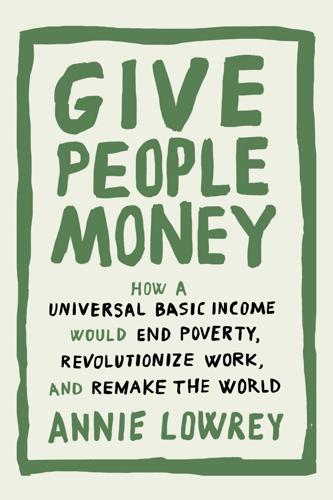
Give People Money
by
Annie Lowrey
Published 10 Jul 2018
with India contemplating one: Rachel Roberts, “Indian Politicians Consider Universal Basic Income Following Successful Trials,” Independent, July 28, 2017. adopted in California: Owen Poindexter, telephone interview by author, Sept. 27, 2017. exceeded activists’ expectations: Enno Schmidt, telephone interview by author, May 17, 2016. half of American jobs: Carl Benedikt Frey and Michael Osborne, “The Future of Employment” (working paper, the Oxford Martin Programme on Technology and Employment, University of Oxford, Sept. 17, 2013). truck drivers: Natalie Kitroeff, “Robots Could Replace 1.7 Million American Truckers in the Next Decade,” Los Angeles Times, Sept. 25, 2016. warehouse box packers: Natalie Kitroeff, “Warehouses Promised Lots of Jobs, but Robot Workforce Slows Hiring,” Los Angeles Times, Dec. 4, 2016.

Humans as a Service: The Promise and Perils of Work in the Gig Economy
by
Jeremias Prassl
Published 7 May 2018
jfklibrary.org/Research/Research-Aids/Ready-Reference/Press-Conferences/ News-Conference-24.aspx, archived at https://perma.cc/LDS6-Y8X7 4. John Maynard Keynes, ‘Economic possibilities for our grandchildren’, in Essays in Persuasion (Palgrave Macmillan 2010), 325. 5. Carl Frey and Michael Osborne, The Future of Employment: How Susceptible Are Jobs to Computerisation? (Oxford Martin School 2013). 6. Ibid., 38, 42. 7. Eric Brynjolfsson and Andrew McAfee, The Second Machine Age: Progress and Prosperity in a Time of Brilliant Technologies (W. W. Norton & Co. 2014), 10. 8. Cynthia Estlund, ‘What should we do after work?

Cogs and Monsters: What Economics Is, and What It Should Be
by
Diane Coyle
Published 11 Oct 2021
Fourcade, Marion, Etienne Ollion, and Yann Algan, 2015, ‘The Superiority of Economists’, Journal of Economic Perspectives, 29 (1), 89–114. Frank, Robert H., Thomas Gilovich, and Dennis T. Regan, 1993, ‘Does Studying Economics Inhibit Cooperation?’, Journal of Economic Perspectives, 7 (2), 159–171. Frey, C. B., and M. A. Osborne, 2017, ‘The Future of Employment: How Susceptible Are Jobs to Computerisation?’, Technological Forecasting and Social Change, 114, 254–280. Friedman, M., 1966, ‘The Methodology of Positive Economics’, in Essays in Positive Economics, Chicago: University of Chicago Press, 3–16. Fryer, R., S. Levitt, J. List, and S. Sadoff, 2012, ‘Enhancing the Efficacy of Teacher Incentives through Loss Aversion: A Field Experiment’, NBER Working Paper 18237, National Bureau of Economic Research, Cambridge, MA.

$2.00 A Day: Living on Almost Nothing in America
by
Kathryn Edin
and
H. Luke Shaefer
Published 31 Aug 2015
Summers, “Lawrence H. Summers on the Economic Challenge of the Future: Jobs,” Wall Street Journal, July 2, 2014, http://www.wsj.com/articles/lawrence-h-summers-on-the-economic-challenge-of-the-future-jobs-1404762501. [>] all occupational categories: Carl Benedikt Frey and Michael A. Osborne, “The Future of Employment: How Susceptible Are Jobs to Computerisation?” (paper prepared for the Machines and Employment workshop, Oxford University Engineering Sciences Department and Oxford Martin Programme on the Impacts of Future Technology, Oxford, UK, September 17, 2013), http://www.oxfordmartin.ox.ac.uk/publications/view/1314. [>] their wages alone: Halpern-Meekin et al., It’s Not Like I’m Poor. [>] a meaningful degree: Congressional Budget Office, “The Effects of a Minimum-Wage Increase on Employment and Family Income” (Washington, DC, February 2014), https://www.cbo.gov/sites/default/files/44995-MinimumWage.pdf. [>] boost economic growth: David Cooper, “Raising the Federal Minimum Wage to $10.10 Would Lift Wages for Millions and Provide a Modest Economic Boost” (EPI Briefing Paper No. 371, Economic Policy Institute, Washington, DC, December 19, 2013), http://s1.epi.org/files/2014/EPI-1010-minimum-wage.pdf. [>] part-time workers: Center for Law and Social Policy, Retail Action Project, and Women Employed, “Tackling Unstable and Unpredictable Work Schedules.” [>] revise its procedures: Jodi Kantor, “Starbucks to Revise Policies to End Irregular Schedules for Its 130,000 Baristas,” New York Times, August 14, 2014, http://www.nytimes.com/2014/08/15/us/starbucks-to-revise-work-scheduling-policies.html?
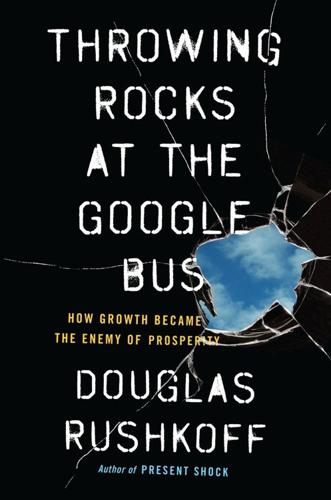
Throwing Rocks at the Google Bus: How Growth Became the Enemy of Prosperity
by
Douglas Rushkoff
Published 1 Mar 2016
The six volumes it published were largely ignored, but they did serve as the basis for much of Daniel Bell’s highly regarded work in the 1970s about what he called the “post-industrial economy.” His main recommendation was to make our technological progress less “random” and “destructive” by matching it with upgraded political institutions.44 Today, it’s MIT’s Brynjolfsson and McAfee who appear to be leading the conversation about technology’s impact on the future of employment—what they call the “great decoupling.” Their extensive research shows, beyond reasonable doubt, that technological progress eliminates jobs and leaves average workers worse off than they were before. “It’s the great paradox of our era,” Brynjolfsson explains. “Productivity is at record levels, innovation has never been faster, and yet at the same time, we have a falling median income and we have fewer jobs.
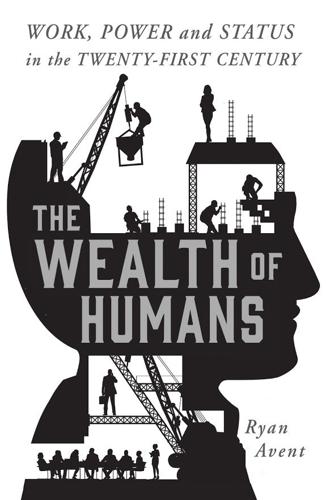
The Wealth of Humans: Work, Power, and Status in the Twenty-First Century
by
Ryan Avent
Published 20 Sep 2016
Hall, Jonathan, and Krueger, Alan, ‘An Analysis of the Labor Market for Uber’s Driver-Partners in the United States’, Working Paper, Princeton University, Industrial Relations Section, January 2015. 7. Autor, David, ‘The “Task Approach” to Labour Markets: An Overview’, Journal for Labor Market Research, January 2013; Frey, Carl Benedikt, and Osborne, Michael, ‘The Future of Employment: How Susceptible are Jobs to Computerisation?’, 17 September 2013. 8. US Census Bureau, Educational Attainment, CPS Historical Time Series Tables. 9. OECD, Population with Tertiary Education. 10. Abramovitz, Moses, and David, Paul, ‘Convergence and Deferred Catch-up: Productivity Leadership and the Waning of American Exceptionalism’, from Landau, Ralph, Taylor, Timothy, and Wright, Gavin, eds., The Mosaic of Economic Growth (Palo Alto, CA: Stanford University Press, 1995). 11.
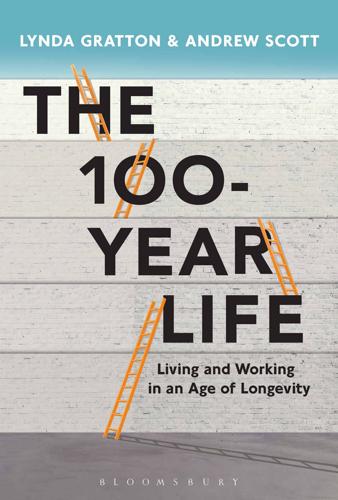
The 100-Year Life: Living and Working in an Age of Longevity
by
Lynda Gratton
and
Andrew Scott
Published 1 Jun 2016
J., ‘The Skill Content of Recent Technological Change: An Empirical Exploration’, Quarterly Journal of Economics 118 (4) (2003): 1279–334. 13Beaudry, P., Green, D. A. and Sand, B.M., ‘The Great Reversal in the Demand for Skill and Cognitive Tasks’, NBER Working Paper 18901 (2013). 14Frey, C.B. and Osbourne, M.A., ‘The Future of Employment: How Susceptible are Jobs to Computerization?’ (Oxford University mimeo, 2013). 15Polanyi, M., Personal Knowledge. Towards a Post Critical Philosophy (Routledge, 1958/98). 16Moravec, H., ‘When Will Computer Hardware Match the Human Brain?’, Journal of Evolution and Technology 1 (1) (1998).
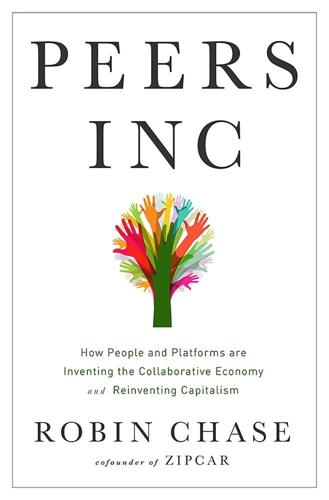
Peers Inc: How People and Platforms Are Inventing the Collaborative Economy and Reinventing Capitalism
by
Robin Chase
Published 14 May 2015
In the next chapter I want to delve deeper and look into what happens when we combine the economics of excess capacity with the discipline of the platforms and the diversity of large numbers of peers. The Peers Inc collaboration points to a viable, scalable, humane way forward in a world overshadowed by anxiety about the future of employment, the scarcity of resources, the rapid pace of change, and the future of capitalism on a finite planet. It offers up discrete and unique roles for governments, companies, institutions, entrepreneurs, and individuals. When this is done well, seemingly magical and unexpected powers result. We stand at the edge of a waterfall, with the momentum of 7 billion lives, two hundred governments, and hundreds of thousands of institutions pressing us forward.

AI Superpowers: China, Silicon Valley, and the New World Order
by
Kai-Fu Lee
Published 14 Sep 2018
$148 billion invested: Dana Olsen, “A Record-Setting Year: 2017 VC Activity in 3 Charts,” Pitchbook, December 15, 2017, https://pitchbook.com/news/articles/a-record-setting-year-2017-vc-activity-in-3-charts. leapt to $15.2 billion: “Top AI Trends to Watch in 2018,” CB Insights, February 2018, https://www.cbinsights.com/research/report/artificial-intelligence-trends-2018/. a dire prediction: Carl Benedikt Frey and Michael A. Osborne, “The Future of Employment: How Susceptible Are Jobs to Automation,” Oxford Martin Programme on Technology and Employment, September 17, 2013, https://www.oxfordmartin.ox.ac.uk/downloads/academic/future-of-employment.pdf. just 9 percent of jobs: Melanie Arntz, Terry Gregory, and Ulrich Zierahn, “The Risk of Automation for Jobs in OECD Countries: A Comparative Analysis,” OECD Social, Employment, and Migration Working Papers, no. 189, May 14, 2016, http://dx.doi.org/10.1787/5jlz9h56dvq7-en. 38 percent of jobs: Richard Berriman and John Hawksworth, “Will Robots Steal Our Jobs?
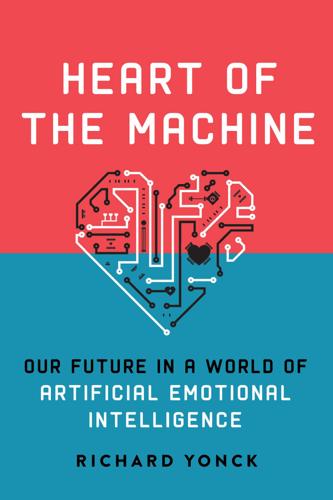
Heart of the Machine: Our Future in a World of Artificial Emotional Intelligence
by
Richard Yonck
Published 7 Mar 2017
“Addictive behaviors and addiction-prone personality traits: Associations with a dopamine multilocus genetic profile.” Addictive Behaviors, 38, 2306–2312. 2013. 26. Wright, J., Hensley, C. “From Animal Cruelty to Serial Murder: Applying the Graduation Hypothesis.” International Journal of Offender Therapy and Comparative Criminology 47 (1): 71–88. February 1, 2003. 27. Frey, C.B., Osborne, M.A. “The Future of Employment: How Susceptible are Jobs to Computerisation?” Oxford Martin School, Programme on the Impacts of Future Technology, University of Oxford. 2013; Rutkin, A.H. “Report Suggests Nearly Half of U.S. Jobs Are Vulnerable to Computerization.” Technology Review. September 12, 2013. 28. Stromberg, J.

The Corruption of Capitalism: Why Rentiers Thrive and Work Does Not Pay
by
Guy Standing
Published 13 Jul 2016
Snyder, ‘Robots and computers could take half our jobs within the next 20 years’, Economic Collapse, 30 September 2013; R. B. Freeman, ‘Who owns the robots rules the world’, IZA World of Labor, 2014. Paul Mason, for example, stated bluntly that IT ‘has reduced the need for work’. 19 C. B. Frey and M. A. Osborne, The Future of Employment: How Susceptible Are Jobs to Computerisation? (Oxford: University of Oxford, 17 September 2013), mimeo. 20 L. Elliott, ‘Robots threaten 15m UK jobs, says Bank of England’s chief economist’, The Guardian, 12 November 2015. 21 J. Bessen, ‘The automation paradox’, The Atlantic, 19 January 2016. 22 The growing merger of physical, digital and biological technologies has been dubbed the Fourth Industrial Revolution.
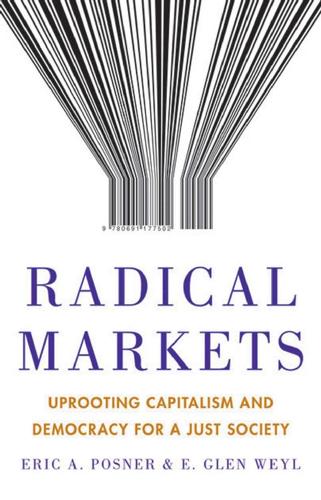
Radical Markets: Uprooting Capitalism and Democracy for a Just Society
by
Eric Posner
and
E. Weyl
Published 14 May 2018
With a slight abuse of nomenclature, we use complexity to refer to what a problem requires in a typical or “average” case in practice rather than what it can be proven to require in the worst case. 16. https://news.microsoft.com/features/democratizing-ai/. 17. A monthly Netflix subscription is $10 and a typical subscriber in 2015 watched 1.5 hours daily according to Netflix’s publicly released statistics. 18. Foer, World Without Mind. 19. Carl Benedikt Frey & Michael A. Osborne, The Future of Employment: How Susceptible Are Jobs to Computerisation?, 114 Technological Forecasting & Social Change 254 (2017). 20. Daron Acemoglu & Pascual Restrepo, Robots and Jobs: Evidence from US Labor Markets (National Bureau of Economic Research, Working Paper No. 23285, 2017). 21. Arrieta-Ibarra et al., Should We Treat Data as Labor?
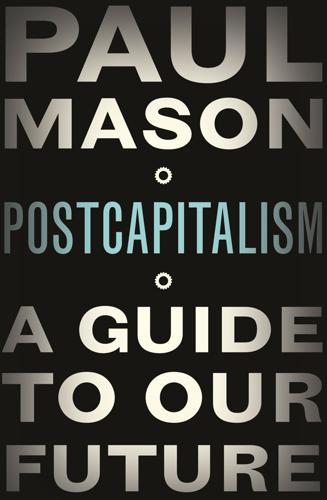
Postcapitalism: A Guide to Our Future
by
Paul Mason
Published 29 Jul 2015
Shailendra K, ‘AI Applications to Metal Stamping Die Design: A Review’, World Academy of Science, Engineering and Technology, vol. 4, 2010 33. OECD, ‘Measuring the Internet Economy: A Contribution to the Research Agenda’, OECD Digital Economy Papers, 226, OECD Publishing, 2013 34. http://dx.doi.org/10.1787/5k43gjg6r8jf-en 35. http://www.bls.gov/news.release/pdf/ocwage.pdf 36. C. B. Frey and M. A. Osborne, ‘The Future of Employment: How Susceptible Are Jobs to Computerisation?’, Oxford Martin School Working Paper, 2013, p. 38, http://www.futuretech.ox.ac.uk/news-release-oxford-martin-school-study-shows-nearly-half-us-jobs-could-be-risk-computerisation 37. A. Gorz Critique of Economic Reason (London, 1989), p. 127 7.

The Future of Money
by
Bernard Lietaer
Published 28 Apr 2013
If the changes are rapid as is the case with Information Technology such job displacements are just as destructive as permanent job losses. How many steelworkers can realistically expect to be retrained as computer programmers or corporate lawyers, however strong the demand is in these sectors. William Bridges, an expert on the future of employment, has concluded that 'within a generation, our scramble for jobs will look like a fight over deck chairs on the Titanic. To add insult to injury, the only societies in the world today that work fewer than four hours a day are the surviving 'primitive' hunter-gatherer tribes, living roughly as they have done over the past 20,000 years.

Bit Rot
by
Douglas Coupland
Published 4 Oct 2016
Staffers walk to the machine, see the sign, feel momentarily inconvenienced and then glow inwardly when they realize they can blamelessly return to their cubicle and play FreeCell and trawl the Internet for Russian dashcam car accident GIFs. Greetings. My name is Shannon Phelps. I’m a temp, but more than that, I’m the future of employment in the Western world. Sure, you may have a job right now, but one day you’ll be me, roving from gig to gig, with no medical, no dental, no anything else except the pleasure of not having to kiss ass or put up with imbeciles or care much about things like, say, life-sucking, boring meetings of the sort I sit in on at Taylor, Wagner & Kimura Filter Systems.

Human Compatible: Artificial Intelligence and the Problem of Control
by
Stuart Russell
Published 7 Oct 2019
See artificial intelligence (AI) intelligent personal assistants, 67–71, 101 commonsense modeling and, 68–69 design template for, 69–70 education systems, 70 health systems, 69–70 personal finance systems, 70 privacy considerations, 70–71 shortcomings of early systems, 67–68 stimulus–response templates and, 67 understanding content, improvements in, 68 International Atomic Energy Agency, 249 Internet of Things (IoT), 65 interpersonal services as the future of employment, 122–24 algorithmic bias and, 128–30 decisions affecting people, use of machines in, 126–28 robots built in humanoid form and, 124–26 intractable problems, 38–39 inverse reinforcement learning, 191–93 IQ, 48 Ishiguro, Hiroshi, 125 is-ought problem, 167 “it’s complicated” argument, 147–48 “it’s impossible” argument, 149–50 “it’s too soon to worry about it” argument, 150–52 jellyfish, 16 Jeopardy!
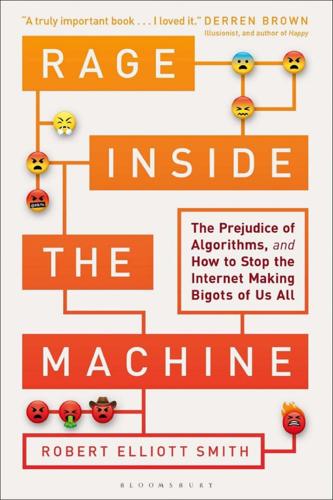
Rage Inside the Machine: The Prejudice of Algorithms, and How to Stop the Internet Making Bigots of Us All
by
Robert Elliott Smith
Published 26 Jun 2019
New York: Viking. 2Neil Johnson, Guannan Zhao, Eric Hunsader, Hong Qi, Nicholas Johnson, Jing Meng and Brian Tivnan, 2013, Abrupt Rise of New Machine Ecology Beyond Human Response Time. Scientific Reports, 3(2627), www.researchgate.net/publication/256490201_Abrupt_rise_of_new_machine_ecology_beyond_human_response_time 3Carl Benedikt Frey and Michael A. Osborne, 2017, The Future of Employment: How Susceptible Are Jobs to Computerisation?, Technological Forecasting and Social Change, 114: 254–280, www.sciencedirect.com/science/article/pii/S0040162516302244 4Matt Day and Benjamin Romano, 2018, Amazon Has Patented a System that Would Put Workers in a Cage, on Top of a Robot. Seattle Times, www.seattletimes.com/business/amazon/amazon-has-patented-a-system-that-would-put-workers-in-a-cage-on-top-of-a-robot/ 5Ayhan Aytes, 2013, Return of the Crowds: Mechanical Turk and Neoliberal States of Exception.
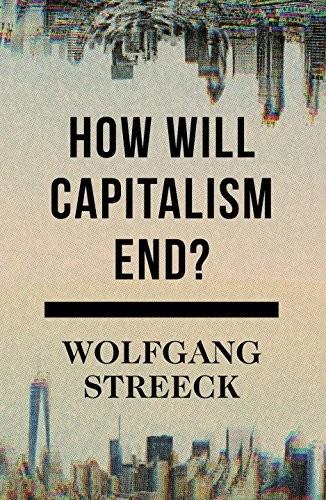
How Will Capitalism End?
by
Wolfgang Streeck
Published 8 Nov 2016
The result is a secular weakening of social counter-movements, caused by a loss of class and social solidarity and accompanied by crippling political conflicts over ethnic diversity, even in traditionally liberal countries such as the Netherlands, Sweden or Norway. Figure 1.7: The broken social contract, U.S., 1947 to present Source: Thomas Kochan, ‘The American Jobs Crisis and the Implications for the Future of Employment Policy’, International Labor Relations Review, vol. 66, no. 2, 2013. The question of how and where capital accumulation must be restrained in order to protect the three fictitious commodities from total commodification has been contested throughout the history of capitalism. But the present worldwide disorder in all three border zones at the same time is something different: it results from a spectacularly successful onslaught of markets, expanding more rapidly than ever, on a wide range of institutions and actors that, whether inherited from the past or built up in long political struggles, had for a time kept capitalism’s advance to some extent socially embedded.

In Our Own Image: Savior or Destroyer? The History and Future of Artificial Intelligence
by
George Zarkadakis
Published 7 Mar 2016
G., and Finkelstein L. (1989), ‘ANABEL: Intelligent Blood-Gas Analysis in the Intensive Care Unit’, in: International Journal of Clinical Monitoring and Computing, Vol. 6, pp. 167–71. 12Deep Blue beat Kasparov in the second six-game match, 2–1 with 3 draws. 13In 1997, Deep Blue ranked as the 259th most powerful supercomputer in the world. 14Silver, N. (2012), The Signal and the Noise, London: Penguin. 15Frey, C. B., and Osborne, M. A. (2013), ‘The Future of Employment: How susceptible are jobs to computerisation?’, in: Machines and Employment Workshop, Oxford: Oxford University Engineering Science Department and Oxford Martin Programme. 16Cowen, T. (2013), Average is Over: Powering American beyond the Age of the Great Stagnation. New York: Dutton. 17Brynjolfsson, E., and McAfee, A. (2014), The Second Machine Age: Work, Progress, and Prosperity in a time of Brilliant Technologies, New York: W.W.
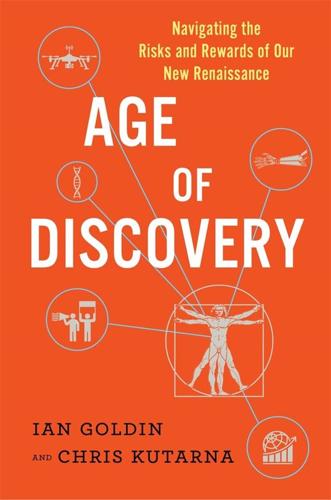
Age of Discovery: Navigating the Risks and Rewards of Our New Renaissance
by
Ian Goldin
and
Chris Kutarna
Published 23 May 2016
“Found: The Islamic State’s Terror Laptop of Doom.” Foreign Policy. Retrieved from www.foreignpolicy.com. 66. Levy, Frank and Richard Murnane (2004). The New Division of Labor: How Computers Are Creating the Next Job Market. Princeton, NJ: Princeton University Press, p. 20. 67. Frey, Carl and Michael Osborne (2013). The Future of Employment. Oxford: Oxford Martin School. Retrieved from www.oxfordmartin.ox.ac.uk; Schwab, Klaus (2016). The Fourth Industrial Revolution. Geneva: World Economic Forum. 68. Berger, Thor and Carl Frey (2014). Industrial Renewal in the 21st Century: Evidence from US Cities. Oxford: Oxford Martin School.

System Error: Where Big Tech Went Wrong and How We Can Reboot
by
Rob Reich
,
Mehran Sahami
and
Jeremy M. Weinstein
Published 6 Sep 2021
“wealth is clearly not the good”: Aristotle, Nicomachean Ethics, trans. Roger Crisp (Cambridge, UK: Cambridge University Press, 2004), 7. quality of people’s lives: Our World in Data (website), https://ourworldindata.org. displace the need for human labor: Carl Benedikt Frey and Michael A. Osborne, “The Future of Employment,” Technological Forecasting and Social Change 114 (January 2017): 254–80, https://doi.org/10.1016/j.techfore.2016.08.019. only 9 percent of jobs are truly threatened: “Automation and Independent Work in a Digital Economy,” Organisation for Economic Co-operation and Development, May 2016, https://www.oecd.org/els/emp/Policy%20brief%20-%20Automation%20and%20Independent%20Work%20in%20a%20Digital%20Economy.pdf.

New Laws of Robotics: Defending Human Expertise in the Age of AI
by
Frank Pasquale
Published 14 May 2020
A smooth and just transition will demand both old and new forms of professionalism in several key areas. The concept of expertise commonly connotes a mastery of a certain body of information, but its actual exercise involves much more.54 For those who conflate occupational duties with mere knowledge, the future of employment looks grim. Computers’ capacity to store and process information has expanded exponentially, and more data about what individuals do during their workday is constantly accumulating.55 But professionalism involves something more complex: a recurrent need to deal with conflicts of values and duties, and even conflicting accounts of facts.56 That makes a difference to the future of work.
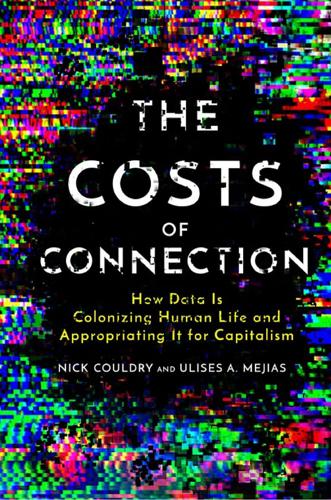
The Costs of Connection: How Data Is Colonizing Human Life and Appropriating It for Capitalism
by
Nick Couldry
and
Ulises A. Mejias
Published 19 Aug 2019
“Reframing Global Justice.” New Left Review 36 (2005): 69–90. . “A Triple Movement? Parsing the Politics of Crisis after Polanyi.” New Left Review 81 (2013): 119–32. Freire, Paulo. Pedagogy of the Oppressed. Harmondsworth, UK: Penguin, 1972. Frey, Carl Benedikt, and Michael A. Osborne. “The Future of Employment: How Susceptible Are Jobs to Computerisation?” Technological Forecasting and Social Change 114, C (2017): 254–80. Fried, Charles. An Anatomy of Values. Cambridge, MA: Harvard University Press, 1970. Frischmann, Brett, and Evan Selinger. Reengineering Humanity. Cambridge. UK: Cambridge University Press, 2018.

On the Clock: What Low-Wage Work Did to Me and How It Drives America Insane
by
Emily Guendelsberger
Published 15 Jul 2019
Hacker Capital in the Twenty-First Century, Thomas Piketty The Economics of Inequality, Thomas Piketty Who Gets What—and Why: The New Economics of Matchmaking and Market Design, Alvin E. Roth Misbehaving: The Making of Behavioral Economics, Richard H. Thaler Notes Introduction 1. Carl Benedikt Frey and Michael A. Osborne, “The Future of Employment: How Susceptible Are Jobs to Computerisation?,” Technological Forecasting and Social Change 114 (January 2017): 254–80. Part One: Amazon 1. Spencer Soper, “Inside Amazon’s Warehouse: Lehigh Valley Workers Tell of Brutal Heat, Dizzying Pace at Online Retailer,” Morning Call (Allentown, PA), September 18, 2011, http://articles.mcall.com/2011-09-18/news/mc-allentown-amazon-complaints-20110917_1_warehouse-workers-heat-stress-brutal-heat. 2.

The Equality Machine: Harnessing Digital Technology for a Brighter, More Inclusive Future
by
Orly Lobel
Published 17 Oct 2022
Jeppesen and Lakhani, “Marginality and Problem-Solving Effectiveness,” 1020. 33. Orly Lobel, “The Debate About How to Classify Workers Is Missing the Bigger Picture,” Harvard Business Review, July 24, 2019, https://hbr.org/2019/07/the-debate-over-how-to-classify-gig-workers-is-missing-the-bigger-picture; Orly Lobel, “The Gig Economy and the Future of Employment and Labor Law,” University of San Francisco Law Review 51, no. 1 (2017): 51; Orly Lobel, “We Are All Gig Workers Now: Online Platforms, Freelancers and the Battles over Employment Status and Rights During the COVID-19 Pandemic,” San Diego Law Review 57, no. 4 (November–December 2020): 919. 34.

Making Sense of Chaos: A Better Economics for a Better World
by
J. Doyne Farmer
Published 24 Apr 2024
Geanakoplos. 2008. ‘Leverage Cycles and the Anxious Economy’. American Economic Review 98 (4): 1211–44. Foster, G. and P. Frijters. 2012. ‘The Formation of Expectations: Competing Theories and New Evidence’. http://tinyurl.com/Foster-Frijters-2012 Frey, Carl Benedikt and Michael A. Osborne. 2013. ‘The Future of Employment: How Susceptible are Jobs to Computerisation?’ Technological Forecasting and Social Change 114 (C): 254–280, doi: 10.1016/j.techfore.2016.08.019. Friedman, Milton. 1953. ‘The Methodology of Positive Economics’, in Milton Friedman (ed.), Essays in Positive Economics: 3–43. Chicago: University of Chicago Press.

Radical Technologies: The Design of Everyday Life
by
Adam Greenfield
Published 29 May 2017
The Gartner research firm takes a still harder line, predicting that one in three workers will be displaced by robotics or artificial intelligence by 2025. See Patrick Thibodeau, “One in three jobs will be taken by software or robots by 2025,” ComputerWorld, October 6, 2014. 23.Carl Benedikt Frey and Michael A. Osborne, “The Future of Employment: How Susceptible Are Jobs to Computerisation?,” Oxford Martin Program on the Impacts of Future Technology, September 17, 2013, oxfordmartin.ox.ac.uk. 24.Carl Benedikt Frey et al., “Technology At Work v2.0: The Future Isn’t What It Used to Be,” Citi Global Perspective and Solutions, January 2016, oxfordmartin.ox.ac.uk. 25.World Economic Forum, “The Future of Jobs Employment, Skills and Workforce Strategy for the Fourth Industrial Revolution,” January 18, 2016, www3.weforum.org/docs/Media/WEF_Future_of_Jobs_embargoed.pdf; Larry Elliott, “Robots threaten 15m UK jobs, Says Bank of England’s Chief Economist,” Guardian, November 12, 2015. 26.Jana Kasperkevic, “McDonald’s CEO: Robots Won’t Replace Workers Despite Tech Opportunities,” Guardian, May 26, 2016. 27.Sam Machkovech, “McDonald’s ex-CEO: $15/hr Minimum Wage Will Unleash the Robot Rebellion,” Ars Technica, May 25, 2016. 28.Spencer Soper, “Inside Amazon’s Warehouse,” Lehigh Valley Morning Call, September 18, 2011.

Innovation and Its Enemies
by
Calestous Juma
Published 20 Mar 2017
Geels, Technological Transitions and System Innovations: A Co-evolutionary and Socio-technical Analysis (Cheltenham, UK: Edward Elgar, 2005). 2. Erik Brynjolfsson and Andrew McAfee, The Second Machine Age: Work, Progress, and Prosperity in a Time of Brilliant Technologies (New York: Norton, 2014), 257. 3. Hasan Bakhshi, Carl Benedikt Frey, and Michael Osborne, Creativity vs. Robots: The Creative Economy and the Future of Employment (London: Nesta, 2015), 6. 4. Martin Ford, The Rise of the Robots: Technology and the Threat of a Jobless Future (New York: Basic Books, 2015), 248; James Bessen, Learning by Doing: The Real Connection between Innovation, Wages, and Wealth (New Haven: Yale University Press, 2015). 5. David A.
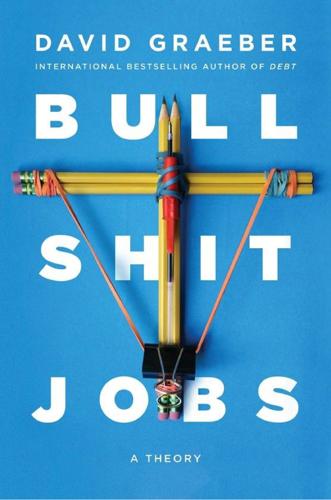
Bullshit Jobs: A Theory
by
David Graeber
Published 14 May 2018
Cambridge, MA: MIT Press, 1988. Frank, Thomas. Listen Liberal, Or What Ever Happened to the Party of the People? New York: Henry Holt, 2016. Frayne, David. The Refusal of Work: The Theory and Practice of Resistance to Work. London: Zed Books, 2015. Frey, Carl B., and Michael A. Osborne. “The Future of Employment: How Susceptible Are Jobs to Computerisation?” Technological Forecasting and Social Change 114 (2017): 254–80. Fromm, Erich. The Anatomy of Human Destructiveness. New York: Henry Holt, 1973. Galbraith, John Kenneth. American Capitalism: The Concept of Countervailing Power. Harmondsworth, UK: Penguin, 1963. ________.

Democracy and Prosperity: Reinventing Capitalism Through a Turbulent Century
by
Torben Iversen
and
David Soskice
Published 5 Feb 2019
Industrial and Labor Relations Review 34 (1): 3–24. ———. 1988. “Labor Market Institutions and Economic Performance.” Economic Policy 6: 62–80. Freitag, Markus. 1999. “Politik und Währung. Ein internationaler Vergleich.” PhD dissertation, University of Bern. Frey, Carl Benedikt, and Michael A. Obsborne. 2017. “The Future of Employment: How Susceptible Are Jobs to Computerisation?” Technological Forecasting and Social Change 114: 254–80. Friedman, T. L. 2005. The World is Flat: A Brief History of the Twenty-First Century. New York: Picador. Galenson, Walter. 1952. The Danish System of Industrial Relations: A Study in Industrial Peace.
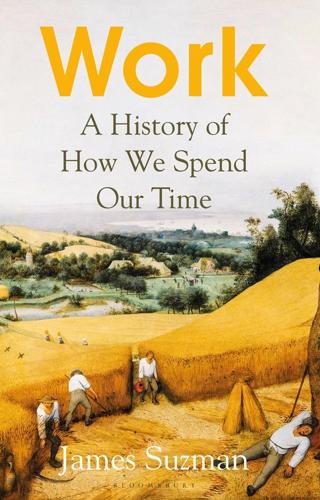
Work: A History of How We Spend Our Time
by
James Suzman
Published 2 Sep 2020
Accessed 22 April 2019. 21Times Higher Education, University Workplace Survey 2016, https://www.timeshighereducation.com/features/university-workplace-survey-2016-results-and-analysis. 22Gallup, State of the Global Workplace, Gallup Press, New York, 2017, p. 20. CHAPTER 15 1Carl Frey and Michael Osborne, The Future of employment: How susceptible are Jobs to Computerisation, Oxford Martin Programme on Technology and Employment, 2013. 2McKinsey Global Institute, A Future that Works: Automation Employment and Productivity, McKinsey and Co., 2017; PricewaterhouseCoopers, UK Economic Outlook, PWC, London, 2017, pp. 30–47. 3PricewaterhouseCoopers, UK Economic Outlook, p. 35. 4‘IBM’s AI loses to human debater but it’s got worlds to conquer’, CNet News, 11 February 2019, https://www.cnet.com/news/ibms-ai-loses-to-human-debater-but-remains-persuasive-technology/. 5‘The Amazing Ways How Unilever Uses Artificial Intelligence To Recruit & Train Thousands Of Employees’, Forbes, 14 December 2018, https://www.forbes.com/sites/bernardmarr/2018/12/14/the-amazing-ways-how-unilever-uses-artificial-intelligence-to-recruit-train-thousands-of-employees/#1c8861bc6274. 6Sungki Hong and Hannah G.

People, Power, and Profits: Progressive Capitalism for an Age of Discontent
by
Joseph E. Stiglitz
Published 22 Apr 2019
These experts believe there is a 50 percent chance of AI outperforming humans in all tasks in 45 years. See Katja Grace, John Salvatier, Allan Dafoe, Baobao Zhang, and Owain Evans, Journal of Artificial Intelligence Research (2018), arXiv:1705.08807. 5.See Carl B. Frey and Michael A. Osborne, “The Future of Employment: How Susceptible Are Jobs to Computerisation?,” Technological Forecasting and Social Change 114 (2017): 254–80. Also see the book by Erik Brynjolfsson and Andrew McAfee, Race against the Machine (Lexington: Digital Frontier Press, 2011). 6.For one version of this story, see “Difference Engine: Luddite Legacy,” The Economist, Nov. 4, 2011. 7.See Stiglitz, The Great Divide, 393–403, based on earlier research by Domenico Delli Gatti, Mauro Gallegati, Bruce Greenwald, Alberto Russo, and me, “Mobility Constraints, Productivity Trends, and Extended Crises,” Journal of Economic Behavior & Organization 83, no. 3 (2012): 375–93; and “Sectoral Imbalances and Long Run Crises,” in The Global Macro Economy and Finance, eds.
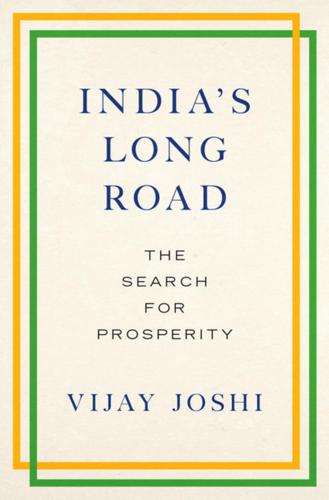
India's Long Road
by
Vijay Joshi
Published 21 Feb 2017
A small minority of workers, mostly in the organized modern sector, have ‘good’ jobs in which wages and labour productivity are relatively high, and the work environment is fairly decent. The vast majority of workers are crammed into the ‘unorganized sector’ doing low-productivity work, with earnings that are paltry, and working conditions that are dire.1 The future of employment looks even worse, because the labour force is expected to grow rapidly. Around a million new job-seekers will enter the labour force every month for the next three decades. As things stand, India is well on the way to perpetuating a two-tier economy. This chapter argues that a more labour-demanding strategy of development could deliver faster growth that is also more inclusive.

Robot Rules: Regulating Artificial Intelligence
by
Jacob Turner
Published 29 Oct 2018
Isaac Asimov, The Rest of Robots (New York: Doubleday, 1964), 43. 4As to data, see “Data Management and Use: Governance in the 21st Century a Joint Report by the British Academy and the Royal Society”, British Academy and the Royal Society, June 2017, https://royalsociety.org/~/media/policy/projects/data-governance/data-management-governance.pdf, accessed 1 June 2018. As to unemployment, see Carl Benedikt Frey and Michael A. Osborne, “The Future of Employment: How Susceptible Are Jobs to Computerisation?”, Oxford Martin Programme on the Impacts of Future Technology Working Paper, September 2013, http://www.oxfordmartin.ox.ac.uk/downloads/academic/future-of-employment.pdf, accessed 1 June 2018. See also Daniel Susskind and Richard Susskind, The Future of the Professions : How Technology Will Transform the Work of Human Experts (Oxford: Oxford University Press, 2015). 5See Nick Bostrom, Superintelligence (Oxford: Oxford University Press, 2014). 6See Ray Kurzweil, The Singularity Is Near: When Humans Transcend Biology (New York: Viking Press, 2005). 7Several nineteenth-century thinkers including Charles Babbage and Ada Lovelace arguably predicted the advent of AI and even prepared designs for machines capable of carrying out intelligent tasks.

Good Economics for Hard Times: Better Answers to Our Biggest Problems
by
Abhijit V. Banerjee
and
Esther Duflo
Published 12 Nov 2019
In fact, these days growth optimists and labor pessimists are often the same people; they both imagine future growth will be primarily driven by the replacement of human workers by robots. In their book The Second Machine Age, our MIT colleagues Erik Brynjolfsson and Andrew McAfee offer a bleak view of the impact of digitization on the future of employment in the United States.3 Digitization, they suspect, will make workers with “ordinary” skills increasingly redundant. As tasks from car painting to spreadsheet manipulation are done by computers or robots, highly educated workers who are adaptable and can program and install the robots will become more and more valuable, but other workers who can be replaced will find themselves without jobs unless they accept extremely low salaries.

Evil Geniuses: The Unmaking of America: A Recent History
by
Kurt Andersen
Published 14 Sep 2020
Frank, Thomas. Listen, Liberal: What Ever Happened to the Party of the People? New York: Metropolitan, 2016. Fraser, Steve. The Limousine Liberal: How an Incendiary Image United the Right and Fractured America. New York: Basic Books, 2016. Frey, Carl Benedikt, and Michael A. Osborne. “The Future of Employment: How Susceptible Are Jobs to Computerisation?” Technological Forecasting and Social Change 114 (2017): 254–80. Friedan, Betty. The Feminine Mystique. New York: W. W. Norton, 2013. Friedman, Milton, and Rose D. Friedman. Capitalism and Freedom. Chicago: University of Chicago Press, 1962.

Blood in the Machine: The Origins of the Rebellion Against Big Tech
by
Brian Merchant
Published 25 Sep 2023
Darvall, Popular Disturbances and Public Order in Regency England: Being an Account of the Luddite and Other Disorders in England During the Years 1811–1817 and of the Attitude and Activity of the Authorities (London: Oxford University Press, 1934; reprint, 1969), introduction. 3. “perhaps the purest” Angus Macintyre, Introduction to Darvall, Popular Disturbances. xvi. 4. The present, after all, is rife Carl Benedikt Frey and Michael A. Osborne, “The Future of Employment: How Susceptible Are Jobs to Computerisation?” Oxford Martin School, September 17, 2013. 5. while its workers peed in bottles Lauren Kaori Gurley, “Amazon Denies Workers Pee in Bottles. Here Are the Pee Bottles,” Vice, March 25, 2021. Prelude 1. It was a simple conviction The conversation about Richard Arkwright’s factory and the potential of automation is described in Mary Strickland, ed., A Memoir of the Life, Writings, and Mechanical Inventions of Edmund Cartwright (London, 1843), 55. 2.

Nexus: A Brief History of Information Networks From the Stone Age to AI
by
Yuval Noah Harari
Published 9 Sep 2024
In countries like the United States, commercial corporations are recognized as “legal persons” enjoying rights and liberties. AIs could be incorporated and thereby similarly recognized. Which means that even jobs and tasks that rely on forming mutual relationships with another person could potentially be automated. One thing that is clear is that the future of employment will be very volatile. Our big problem won’t be an absolute lack of jobs, but rather retraining and adjusting to an ever-changing job market. There will likely be financial difficulties—who will support people who lost their old job while they are in transition, learning a new set of skills?

Power and Progress: Our Thousand-Year Struggle Over Technology and Prosperity
by
Daron Acemoglu
and
Simon Johnson
Published 15 May 2023
Frenkel, Sheera, and Cecelia Kang. 2021. An Ugly Truth: Inside Facebook’s Battle for Domination. New York: HarperCollins. Frey, Carl Benedikt. 2019. The Technology Trap: Capital, Labor, and Power in the Age of Automation. Princeton, NJ: Princeton University Press. Frey, Carl Benedikt, and Michael A. Osborne. 2013. “The Future of Employment: How Susceptible Are Jobs to Computerisation?” Mimeo. Oxford: Oxford Martin School. Fried, Ina. 2015. “Google Self-Driving Car Chief Wants Tech on the Market Within Five Years.” Vox, March 17. www.vox.com/2015/3/17/11560406/google-self-driving-car-chief-wants-tech-on-the-market-within-five.

Future Crimes: Everything Is Connected, Everyone Is Vulnerable and What We Can Do About It
by
Marc Goodman
Published 24 Feb 2015
,” IEEE Spectrum, May 29, 2014. 27 “it can read”: Brandon Keim, “I, Nanny,” Wired, Dec. 18, 2008. 28 To help alleviate: Mai Iida, “Robot Niche Expands in Senior Care,” Japan Times, June 19, 2013. 29 Thousands of Paro units: Anne Tergesen and Miho Inada, “It’s Not a Stuffed Animal, It’s a $6,000 Medical Device,” Wall Street Journal, June 21, 2010. 30 One of the fastest-growing: “Your Alter Ego on Wheels,” Economist, March 9, 2013. 31 Robots such as the MantaroBot: Serene Fang, “Robot Care for Aging Parents,” Al Jazeera America, Feb. 27, 2014. 32 With the push of a button: Ryan Jaslow, “RP-VITA Robot on Wheels Lets Docs Treat Patients Remotely,” CBS News, Nov. 19, 2013. 33 Already Starwood hotels: “Robots Are the New Butlers at Starwood Hotels,” CNBC, Aug. 12, 2014. 34 A 2013 study: Carl Benedikt Frey and Michael A. Osborne, “The Future of Employment,” Oxford Martin, Sept. 17, 2013, http://www.oxfordmartin.ox.ac.uk/. 35 Those working in the transportation field: For an excellent discussion on the future of robots, automation, and work, see Kevin Kelly, “Better Than Human: Why Robots Will—and Must—Take Our Jobs,” Wired, Dec. 24, 2012; Erik Brynjolfsson and Andrew McAfee, The Second Machine Age: Work, Progress, and Prosperity in a Time of Brilliant Technologies (New York: W.

The Great Leveler: Violence and the History of Inequality From the Stone Age to the Twenty-First Century
by
Walter Scheidel
Published 17 Jan 2017
“Globalization and inequality.” In Salverda, Nolan, and Smeeding, eds. 2009: 575–598. Freu, Christel. 2015. “Labour status and economic stratification in the Roman world: the hierarchy of wages in Egypt.” Journal of Roman Archaeology 28: 161–177. Frey, Carl Benedikt, and Osborne, Michael A. 2013. “The future of employment: how susceptible are jobs to computerization?” Oxford Martin School Working Paper. Frier, Bruce W. 2001. “More is worse: some observations on the population of the Roman empire.” In Scheidel, Walter, ed., Debating Roman demography. Leiden, Netherlands: Brill, 139–159. Frydman, Carola, and Molloy, Raven. 2012.

Artificial Intelligence: A Modern Approach
by
Stuart Russell
and
Peter Norvig
Published 14 Jul 2019
Experiments with a new boosting algorithm. In ICML-96. Freund, Y. and Schapire, R. E. (1999). Large margin classification using the perceptron algorithm. Machine Learning, 37, 277–296. Frey, B. J. (1998). Graphical models for machine learning and digital communication. MIT Press. Frey, C. B. and Osborne, M. A. (2017). The future of employment: How susceptible are jobs to computerisation? Technological forecasting and social change, 114, 254–280. Friedberg, R. M. (1958). A learning machine: Part I. IBM Journal of Research and Development, 2, 2–13. Friedberg, R. M., Dunham, B., and North, T. (1959). A learning machine: Part II.